Mary Anne Yarde's Blog: The Coffee Pot Book Club , page 228
April 10, 2016
Dirt - Character Interview #YA #fantasy @Its_CCHogan
It is my great pleasure to welcome YA fantasy author CC Hogan, and a noble dragon friend of his, who goes by the name Be-Eli, on to the blog today.
Let's take a quick look at the book, because I can not wait to interview a dragon...!
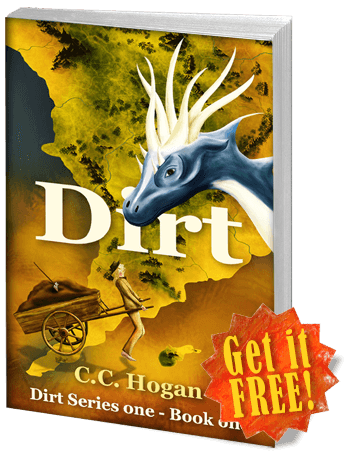 Dirt is not just a high fantasy; it is a saga that stretches over one thousand years. It tells the tales of people fighting for freedom in a society plagued by corruption, greed and feudalism. It is not the tale of beautiful princesses and noble kings, but of cheesemakers, cart pushers, sergeants; ordinary people who are thrown together to achieve extraordinary things.
Dirt is not just a high fantasy; it is a saga that stretches over one thousand years. It tells the tales of people fighting for freedom in a society plagued by corruption, greed and feudalism. It is not the tale of beautiful princesses and noble kings, but of cheesemakers, cart pushers, sergeants; ordinary people who are thrown together to achieve extraordinary things.
And it is a tale of dragons; beautiful creatures who live in villages, have friends, enjoy poetry and singing and will lay down their lives to help bring peace to the world of Dirt.
Most of all, it is the story of Dirt.
Dirt is a true saga. The characters’ lives are intricate, detailed and profound. The world is finely described, old and full of history. But it is also a place of laughter, of simple pleasures, of friendship, good times and the endless search for somewhere to call home.
***Now for the bit I have been really looking forward to. I have never interviewed a dragon before, so this is a first! I must admit, I am a little bit nervous, but fingers-crossed, I will live to tell the tale!
1. Introduce yourself? (I am usually not so abrupt - but, people...I am talking to a dragon)!
I don’t suppose you have a beer, do you? Yeah, I know, odd thing to ask, but dragons like beer; brew it too, or at least, the Draig Mynyth Coh do. Those are Red Mountain Dragons. Idiots, most of them. It is something we share with friends and if are chatting, well, that makes us friends and is big deal to us Draig.
Anyway, Be-Elin is me. I am, well, how old would you like me to be? In the book I am sort of around seventy when you first meet me, but you have to understand that Draig yr Anialr, desert dragons, live to eight or nine hundred years or so. Young pup, me!
I was born in Ponack in the Sand Hills. That is in the far north of the Eastern Plains in Bind on the world of Dirt. Very arid are the plains, but it is cold where we are.
I was just thinking that you probably have no idea whether I am male or female. The clue is in the name, girl. Can I call you girl? You are rather younger than me. But then, I even call Fren-Eirol girl and she is four hundred years older than me!
Anyway, back to the gender problem. The clue is in the name. Females are normally called Be- something, pronounced BAY. Boys are Mab- something. If we pair up, like your marriage, but far less formal, it becomes Fren and Bren instead. Not Mr and Mrs; these are said part of our names.
Quick thought, I probably should tell you how to pronounce what I am. Draig yr Anialr is pronounced Draig eer-AN-yah. Happy?
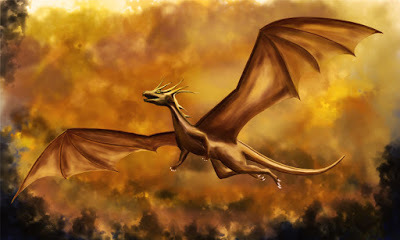
2. If you could live anywhere in the world, where would it be?
Dragons fly; rather good at it. Not incredibly fast, but on our own and flying higher than you can breathe, we can cross a continent in just a few days. As we fly and look down, we see no borders, no nations and the only divides are the mountains and rivers, not fences built by you territorial humans.
Dragons do not have nations and are not territorial. Guess what? We never have wars between us, but we do have to suffer yours.
So when I name a place to live, it is on your terms, not mine.
I am very fond of the Sand Hills. The community that grew up in Ponack was made up of both dragons and humans and we lived, played and worked together, despite size differences.
I very much like the Isle of Hope, too. But then, who doesn’t? The sea is warm, it is summer all year round and it is off the trade routes, so is left in peace. Great swimming, and I love swimming.
But in the end, I will be happiest wherever my rider is happiest and vice versa. Easy to please, me.
3. What would you consider to be your greatest strength?
Probably not my short temper, or my humour. I am sorry, but I get bored so quickly and I can be irreverent and short, when I am not flirting and running off with all those gorgeous young…
Confirmed Be, I suspect!
But I am not stupid and behind the silliness and bad jokes, I do watch and I do listen. My friends are my family and I will use my huge strength and experience and intelligence to protect them and defend them, whatever the cost.
Loyalty, duty and love are all the same to me. They are bound up together and inextricable from each other.
I hope it is a strength because I can’t stop feeling as I do. I love my friends, both human and dragon.
4. What is your biggest regret?
Oh, dear. Can I be elusive? My story is complicated, like so many others in my world, and I do not want to spoil the play for those who have yet to read the books!
I mentioned loyalty. When a Draig yr Anialr and a human pair as dragon and rider, it is a bond that transcends just friendship or even love. Riding a dragon is terribly difficult. You are not robust like me and you cannot survive the twisting and turning that I can do when flying; you would pass out and fall off! For it to work, the trust between us has to be absolute. We must know each other intimately, completely, passionately.
You don’t live as long as I do, so barring accidents, I will outlive you, and that is hard for a dragon. We do not get over the deaths of our riders easily.
At one time I was ordered to abandon my rider, as I saw it; I can’t tell you why, but it was important. It was a hard thing and almost unheard of.
So I wasn’t there when they needed me most, and I will regret that till the day I pass.
5. Describe your perfect day.
Flying!
Oh, you poor, cuddly humans don’t get this, or not completely. If you fly on my back, girl, for you it is a thrill. It is fun, exciting and probably a little liberating. But you are not doing the flying; I am.
When I fly, when I feel the air under me like a cushion, when I catch the wind and soar to the highest heights, far above the tallest mountain, I am in my world. Only the Scimrafugol, the beautiful sunbirds, fly higher than me and sometimes we fly together.
I can stay in this open, endless, dreamlike land for hour after hour and nothing can or will ever compare. Ask any dragon and they will tell you the same.
On the other hand, a roast goat will get my attention pretty quickly!
6. Have you ever swum naked?
Just as point of reference, dragons have no modesty! As you can imagine, therefore, we don’t wear clothes.
Oh, I know some wear decorative items and I wear hides for protection (draig can be cut as easily as can you), but never for modesty. My “dragon bits,” as Silvi calls them, are there for the world!
So yes, I love to swim naked. To frolic and dive in the waves, spinning and turning and then to catch a big wave and use it to soar into the air, turn and dive again is a lot of fun!
I may have nearly drowned a few humans in the process, possibly. I am sure they loved it really.
7. What is your most embarrassing memory?
Want a list?
Dragons don’t lie. No, quite honestly, we don’t. We can keep confidences, sort of, and some dragons can be terribly evasive, but if you ask me what colour the sky is, I will tell you the truth.
Lying is not in our heads and is not part of how we think. So true is this that we can be easily deceived by humans; since we cannot lie, we cannot spot a lie. This has made us distrustful sometimes and is why some dragons will not mix with humans.
However, in my case, I am so bad at it that I put my big, clawed foot in it constantly. I have embarrassed my rider so many times by revealing things they were trying to keep quiet about; like their age or something they were planning, or a surprise for their mate.
Oh, there I go again. I keep forgetting that you don’t like your partners being referred to as your “mate.”
Don’t understand why; is sure sounds like you are mating like mad half the time.
Did I mention that dragons have better hearing than humans?
8. Fine dining or a picnic?
Fine dining? Is that little portions or something?
I am beginning to suspect that perhaps you have not quite understood the realities of scale, girl. Draig yr Anialr are not quite as big as Draig Morglas, sea dragons, and nowhere near as big as the Reds, but I am still a large girl. My head is nearly as big as all of you and when I stand, you probably don’t quite reach my hip.
Having said all that, we do like good food. If I am desperate I will kill and eat raw, but I would rather my goat or deer was wrapped in herbs and roasted. I love lamb, a whole one, tied up in leaves and herbs and slow-roasted in hot ashes buried in a pit. Succulent and tender.
Fren-Eirol likes pickled fish, but me, I am not so keen and they give me wind.
9. What makes you angry?
Humans.
Sorry, girl, I love you like mad. You are small, you look like my friend Silvi who was cute, blonde and funny (as well as being one hell of rider and leader), but you humans! Why do you want to tear the world apart?
I sort of get being territorial when it takes you forever to go anywhere and you want to protect your hunting grounds, but you don’t leave it there. You love putting up fences, inventing gods, creating differences. Not just between tribes, but between male and female. So many of my human female friends have been put down by the males of their kind.
Dragons don’t do any of that. When we pair, that Bren and Fren thing, that is male and female because otherwise we cannot produce young. But other than that? Male and female dragons are often similar sizes (except for the biggest of the Reds), and we love each other whoever we are. We don’t see differences and I am damned certain we won’t invent them.
But you humans? I remember a dragon friend called Maeb-Trien (Maeb is an old form of Mab). Human soldiers killed his mate, his love. I remember him flying over the enemy army, screaming at them, crying. “Tell me why!” he shouted. “Why would you do that? Tell me, for I do not understand!”
So, yes. I love my human friends, but, oh, sometimes you make me so angry and so sad.
10. If you could choose a magic power, what would it be?
Dragons don’t need magic, but a few of us have a little, or what some people see as magic. Draig Bach-Iachawr, healer dragons, can use their talents to push back infections and help heal bones and wounds. But despite their cleverness, they will often resort to herbal remedies to finish the job.
Mab-Tok, a small, darling friend, was the best of them, but he was notorious for his purges. These vial mixtures would be forced down the throat of some poor, vulnerable draig, or even a human a couple of times. They would fill your throat and stomach and lungs and would make you sick and … oh, you might have young readers! Well, it could be messy. Very. For hours.
Put it this way, I remember Fren-Eirol after a terrible accident asking if anyone had anything for a headache. Mab-Tok said he had something, at which point she glared at him and asked if anyone else had anything.
So, a magic power? Yes. Have you any magic to replace those damned purges?
Book Extract. How lucky are we? This is a special sneak preview from the first book of series two, which will be released this year.
It took the mayor ten minutes to quieten the people in the square enough so that he could introduce the king who then ignored the box and stood up on one of the trader’s tables, with apologies to the surprised woman.
“Our kingdom, our lands are in terrible danger,” he shouted out. “This morning, our archers and our friends, the Draig yr Anialr, destroyed a force of one thousand cavalry and five hundred infantry crossing the Fevin Hills to attack Sonaton.” Although dangerously close to the town, the battle had been far enough away that none at the market knew that the Calons had attacked. The murmur that went through the square was of surprise as much as it was of relief.
“But there is now another force, a bigger force of four thousand soldiers heading from the east. They aim to crush our armies and then crushyou. We cannot stop them; not on our own.” Now he had their full attention. “I am not going to plead; I am just going to tell you straight. If we are going to have a hope of beating this force, then we need as many archers, longbow and short bow, of any ability to head to Kam today. Not tomorrow, today. The armies of Calon may think they can beat our army, but I am damned sure they cannot beat the people of Hertenesse too. So please, spread the word. Anyone with a bow and arrows, please head to Kam now. Thank you.” As the king stepped down, most of the people stood around in silence, just waiting for someone else to do something first.
“Oh sod this!” Silvi snapped and jumped up onto the table. She took her longbow off her back and notched an arrow. “Before you could take a step I could kill three of you,” she shouted out. The crowd moved back a pace. “You would think I was completely mad. You would believe I am a murderer. Three of the people you love, three friends or family would be dead.” Silvi turned slowly, moving her aimacross the crowd. “Today, one of my closest friends, a man who I trusted with my life, was cut to pieces by Calon swords. I do not know how many he killed himself, but when we found him, he was kneeling in his own blood and gore.” She lowered her bow. “I love my friends. They are my family and I will not stand by while the soldiers from Calon hack them to pieces. So why are you still standing here waiting for the Calons to come and kill your friends and your family?” Silvi was angry and her young voice was harsh and tired. “I will be waiting at Kam for all those with the guts to come and stand next to me and next to their king.”
As she finished, Be-Elin landed in the square scattering the crowd. Silvi marched over to the dragon with the king and they climbed onto her back. She stood up on the hides and looked around the silent square, her eyes falling on the busy tavern where at least thirty young men had come out to listen, still carrying their pots of beer. With a growl, Silvi notched two arrows and sent them flying into the tavern door, knocking it shut.
“The tavern stays shut till the bloody Calons are beaten,” she shouted. “Go, Be-Elin.”
As the dragon headed into the sky and back to Fevin Hills to help Sir Nolenn, several young men and women left the square to head to their homes and get their bows. Within an hour the square was empty. The landlord of the tavern opened his door, removed the arrows and then used them to nail a sign to his own door.
“Tavern closed till we beat the bloody Calons.”
Where can I get my hands on a FREE copy of this fabulous book?AmazonB&N KoboSmashwords
About the author
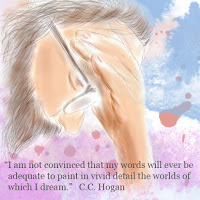 CC Hogan is the author of Dirt, the huge fantasy saga, and The Stink, a young adult book set in London in1976.
CC Hogan is the author of Dirt, the huge fantasy saga, and The Stink, a young adult book set in London in1976.
He is also working on a new science fiction title for young teenagers and several musical projects.
His best friend desperately wants to ride a dragon; he would love to make it possible.
Useful Links Facebook Twitter Blog Dirt The Stink LibraryThing Dirt Universe at Goodreads
Let's take a quick look at the book, because I can not wait to interview a dragon...!
 Dirt is not just a high fantasy; it is a saga that stretches over one thousand years. It tells the tales of people fighting for freedom in a society plagued by corruption, greed and feudalism. It is not the tale of beautiful princesses and noble kings, but of cheesemakers, cart pushers, sergeants; ordinary people who are thrown together to achieve extraordinary things.
Dirt is not just a high fantasy; it is a saga that stretches over one thousand years. It tells the tales of people fighting for freedom in a society plagued by corruption, greed and feudalism. It is not the tale of beautiful princesses and noble kings, but of cheesemakers, cart pushers, sergeants; ordinary people who are thrown together to achieve extraordinary things. And it is a tale of dragons; beautiful creatures who live in villages, have friends, enjoy poetry and singing and will lay down their lives to help bring peace to the world of Dirt.
Most of all, it is the story of Dirt.
Dirt is a true saga. The characters’ lives are intricate, detailed and profound. The world is finely described, old and full of history. But it is also a place of laughter, of simple pleasures, of friendship, good times and the endless search for somewhere to call home.
***Now for the bit I have been really looking forward to. I have never interviewed a dragon before, so this is a first! I must admit, I am a little bit nervous, but fingers-crossed, I will live to tell the tale!
1. Introduce yourself? (I am usually not so abrupt - but, people...I am talking to a dragon)!
I don’t suppose you have a beer, do you? Yeah, I know, odd thing to ask, but dragons like beer; brew it too, or at least, the Draig Mynyth Coh do. Those are Red Mountain Dragons. Idiots, most of them. It is something we share with friends and if are chatting, well, that makes us friends and is big deal to us Draig.
Anyway, Be-Elin is me. I am, well, how old would you like me to be? In the book I am sort of around seventy when you first meet me, but you have to understand that Draig yr Anialr, desert dragons, live to eight or nine hundred years or so. Young pup, me!
I was born in Ponack in the Sand Hills. That is in the far north of the Eastern Plains in Bind on the world of Dirt. Very arid are the plains, but it is cold where we are.
I was just thinking that you probably have no idea whether I am male or female. The clue is in the name, girl. Can I call you girl? You are rather younger than me. But then, I even call Fren-Eirol girl and she is four hundred years older than me!
Anyway, back to the gender problem. The clue is in the name. Females are normally called Be- something, pronounced BAY. Boys are Mab- something. If we pair up, like your marriage, but far less formal, it becomes Fren and Bren instead. Not Mr and Mrs; these are said part of our names.
Quick thought, I probably should tell you how to pronounce what I am. Draig yr Anialr is pronounced Draig eer-AN-yah. Happy?

2. If you could live anywhere in the world, where would it be?
Dragons fly; rather good at it. Not incredibly fast, but on our own and flying higher than you can breathe, we can cross a continent in just a few days. As we fly and look down, we see no borders, no nations and the only divides are the mountains and rivers, not fences built by you territorial humans.
Dragons do not have nations and are not territorial. Guess what? We never have wars between us, but we do have to suffer yours.
So when I name a place to live, it is on your terms, not mine.
I am very fond of the Sand Hills. The community that grew up in Ponack was made up of both dragons and humans and we lived, played and worked together, despite size differences.
I very much like the Isle of Hope, too. But then, who doesn’t? The sea is warm, it is summer all year round and it is off the trade routes, so is left in peace. Great swimming, and I love swimming.
But in the end, I will be happiest wherever my rider is happiest and vice versa. Easy to please, me.
3. What would you consider to be your greatest strength?
Probably not my short temper, or my humour. I am sorry, but I get bored so quickly and I can be irreverent and short, when I am not flirting and running off with all those gorgeous young…
Confirmed Be, I suspect!
But I am not stupid and behind the silliness and bad jokes, I do watch and I do listen. My friends are my family and I will use my huge strength and experience and intelligence to protect them and defend them, whatever the cost.
Loyalty, duty and love are all the same to me. They are bound up together and inextricable from each other.
I hope it is a strength because I can’t stop feeling as I do. I love my friends, both human and dragon.
4. What is your biggest regret?
Oh, dear. Can I be elusive? My story is complicated, like so many others in my world, and I do not want to spoil the play for those who have yet to read the books!
I mentioned loyalty. When a Draig yr Anialr and a human pair as dragon and rider, it is a bond that transcends just friendship or even love. Riding a dragon is terribly difficult. You are not robust like me and you cannot survive the twisting and turning that I can do when flying; you would pass out and fall off! For it to work, the trust between us has to be absolute. We must know each other intimately, completely, passionately.
You don’t live as long as I do, so barring accidents, I will outlive you, and that is hard for a dragon. We do not get over the deaths of our riders easily.
At one time I was ordered to abandon my rider, as I saw it; I can’t tell you why, but it was important. It was a hard thing and almost unheard of.
So I wasn’t there when they needed me most, and I will regret that till the day I pass.
5. Describe your perfect day.
Flying!
Oh, you poor, cuddly humans don’t get this, or not completely. If you fly on my back, girl, for you it is a thrill. It is fun, exciting and probably a little liberating. But you are not doing the flying; I am.
When I fly, when I feel the air under me like a cushion, when I catch the wind and soar to the highest heights, far above the tallest mountain, I am in my world. Only the Scimrafugol, the beautiful sunbirds, fly higher than me and sometimes we fly together.
I can stay in this open, endless, dreamlike land for hour after hour and nothing can or will ever compare. Ask any dragon and they will tell you the same.
On the other hand, a roast goat will get my attention pretty quickly!
6. Have you ever swum naked?
Just as point of reference, dragons have no modesty! As you can imagine, therefore, we don’t wear clothes.
Oh, I know some wear decorative items and I wear hides for protection (draig can be cut as easily as can you), but never for modesty. My “dragon bits,” as Silvi calls them, are there for the world!
So yes, I love to swim naked. To frolic and dive in the waves, spinning and turning and then to catch a big wave and use it to soar into the air, turn and dive again is a lot of fun!
I may have nearly drowned a few humans in the process, possibly. I am sure they loved it really.
7. What is your most embarrassing memory?
Want a list?
Dragons don’t lie. No, quite honestly, we don’t. We can keep confidences, sort of, and some dragons can be terribly evasive, but if you ask me what colour the sky is, I will tell you the truth.
Lying is not in our heads and is not part of how we think. So true is this that we can be easily deceived by humans; since we cannot lie, we cannot spot a lie. This has made us distrustful sometimes and is why some dragons will not mix with humans.
However, in my case, I am so bad at it that I put my big, clawed foot in it constantly. I have embarrassed my rider so many times by revealing things they were trying to keep quiet about; like their age or something they were planning, or a surprise for their mate.
Oh, there I go again. I keep forgetting that you don’t like your partners being referred to as your “mate.”
Don’t understand why; is sure sounds like you are mating like mad half the time.
Did I mention that dragons have better hearing than humans?
8. Fine dining or a picnic?
Fine dining? Is that little portions or something?
I am beginning to suspect that perhaps you have not quite understood the realities of scale, girl. Draig yr Anialr are not quite as big as Draig Morglas, sea dragons, and nowhere near as big as the Reds, but I am still a large girl. My head is nearly as big as all of you and when I stand, you probably don’t quite reach my hip.
Having said all that, we do like good food. If I am desperate I will kill and eat raw, but I would rather my goat or deer was wrapped in herbs and roasted. I love lamb, a whole one, tied up in leaves and herbs and slow-roasted in hot ashes buried in a pit. Succulent and tender.
Fren-Eirol likes pickled fish, but me, I am not so keen and they give me wind.
9. What makes you angry?
Humans.
Sorry, girl, I love you like mad. You are small, you look like my friend Silvi who was cute, blonde and funny (as well as being one hell of rider and leader), but you humans! Why do you want to tear the world apart?
I sort of get being territorial when it takes you forever to go anywhere and you want to protect your hunting grounds, but you don’t leave it there. You love putting up fences, inventing gods, creating differences. Not just between tribes, but between male and female. So many of my human female friends have been put down by the males of their kind.
Dragons don’t do any of that. When we pair, that Bren and Fren thing, that is male and female because otherwise we cannot produce young. But other than that? Male and female dragons are often similar sizes (except for the biggest of the Reds), and we love each other whoever we are. We don’t see differences and I am damned certain we won’t invent them.
But you humans? I remember a dragon friend called Maeb-Trien (Maeb is an old form of Mab). Human soldiers killed his mate, his love. I remember him flying over the enemy army, screaming at them, crying. “Tell me why!” he shouted. “Why would you do that? Tell me, for I do not understand!”
So, yes. I love my human friends, but, oh, sometimes you make me so angry and so sad.
10. If you could choose a magic power, what would it be?
Dragons don’t need magic, but a few of us have a little, or what some people see as magic. Draig Bach-Iachawr, healer dragons, can use their talents to push back infections and help heal bones and wounds. But despite their cleverness, they will often resort to herbal remedies to finish the job.
Mab-Tok, a small, darling friend, was the best of them, but he was notorious for his purges. These vial mixtures would be forced down the throat of some poor, vulnerable draig, or even a human a couple of times. They would fill your throat and stomach and lungs and would make you sick and … oh, you might have young readers! Well, it could be messy. Very. For hours.
Put it this way, I remember Fren-Eirol after a terrible accident asking if anyone had anything for a headache. Mab-Tok said he had something, at which point she glared at him and asked if anyone else had anything.
So, a magic power? Yes. Have you any magic to replace those damned purges?
Book Extract. How lucky are we? This is a special sneak preview from the first book of series two, which will be released this year.
It took the mayor ten minutes to quieten the people in the square enough so that he could introduce the king who then ignored the box and stood up on one of the trader’s tables, with apologies to the surprised woman.
“Our kingdom, our lands are in terrible danger,” he shouted out. “This morning, our archers and our friends, the Draig yr Anialr, destroyed a force of one thousand cavalry and five hundred infantry crossing the Fevin Hills to attack Sonaton.” Although dangerously close to the town, the battle had been far enough away that none at the market knew that the Calons had attacked. The murmur that went through the square was of surprise as much as it was of relief.
“But there is now another force, a bigger force of four thousand soldiers heading from the east. They aim to crush our armies and then crushyou. We cannot stop them; not on our own.” Now he had their full attention. “I am not going to plead; I am just going to tell you straight. If we are going to have a hope of beating this force, then we need as many archers, longbow and short bow, of any ability to head to Kam today. Not tomorrow, today. The armies of Calon may think they can beat our army, but I am damned sure they cannot beat the people of Hertenesse too. So please, spread the word. Anyone with a bow and arrows, please head to Kam now. Thank you.” As the king stepped down, most of the people stood around in silence, just waiting for someone else to do something first.
“Oh sod this!” Silvi snapped and jumped up onto the table. She took her longbow off her back and notched an arrow. “Before you could take a step I could kill three of you,” she shouted out. The crowd moved back a pace. “You would think I was completely mad. You would believe I am a murderer. Three of the people you love, three friends or family would be dead.” Silvi turned slowly, moving her aimacross the crowd. “Today, one of my closest friends, a man who I trusted with my life, was cut to pieces by Calon swords. I do not know how many he killed himself, but when we found him, he was kneeling in his own blood and gore.” She lowered her bow. “I love my friends. They are my family and I will not stand by while the soldiers from Calon hack them to pieces. So why are you still standing here waiting for the Calons to come and kill your friends and your family?” Silvi was angry and her young voice was harsh and tired. “I will be waiting at Kam for all those with the guts to come and stand next to me and next to their king.”
As she finished, Be-Elin landed in the square scattering the crowd. Silvi marched over to the dragon with the king and they climbed onto her back. She stood up on the hides and looked around the silent square, her eyes falling on the busy tavern where at least thirty young men had come out to listen, still carrying their pots of beer. With a growl, Silvi notched two arrows and sent them flying into the tavern door, knocking it shut.
“The tavern stays shut till the bloody Calons are beaten,” she shouted. “Go, Be-Elin.”
As the dragon headed into the sky and back to Fevin Hills to help Sir Nolenn, several young men and women left the square to head to their homes and get their bows. Within an hour the square was empty. The landlord of the tavern opened his door, removed the arrows and then used them to nail a sign to his own door.
“Tavern closed till we beat the bloody Calons.”
Where can I get my hands on a FREE copy of this fabulous book?AmazonB&N KoboSmashwords
About the author
 CC Hogan is the author of Dirt, the huge fantasy saga, and The Stink, a young adult book set in London in1976.
CC Hogan is the author of Dirt, the huge fantasy saga, and The Stink, a young adult book set in London in1976.He is also working on a new science fiction title for young teenagers and several musical projects.
His best friend desperately wants to ride a dragon; he would love to make it possible.
Useful Links Facebook Twitter Blog Dirt The Stink LibraryThing Dirt Universe at Goodreads
Published on April 10, 2016 22:27
April 8, 2016
Friday Knights - Sir Agravain
"Finally, you will get all that you deserve, old friend." Merlin
There is always one bad apple in every family - unfortunate for Arthur, the rot seems to run rather deep in his.
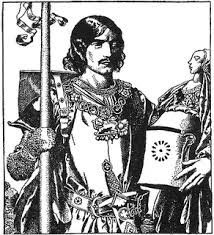
Sir Agravain, is yet another son of King Lot of Orkeny and Morgause (Arthur's sister), which makes him the brother of Sir Gawain, Sir Gaheris and Sir Gareth as well as being a half-brother to Mordred. He is, therefore, Arthur's nephew.
Sir Agravain is a complicated character, in the early works he is described as a handsome, tall man, who was a reasonable fighter and sometimes, when the mood took him, partook in heroic deeds. He is generally considered a respectable knight from a noble family.
However...
His portrayal isn't always very flattering. In the Vulgate Cycle he is portrayed in a darker light. He has a "somewhat misshapen" body - which always reminds me of the portrayal of Ricahrd III in Shakespeare's play of the same name. Sir Agaravin may be "...a fine knight..." but he is "...arrogant and full of evil words..." It is not surprising then, that he and Mordred get on so well.
Despite his brother, Sir Gawain's, warning - Agravain, along with Mordred, is responsible for exposing Guinevere's affair with Lancelot. Which kind of implies that Gawain probably had a good idea about what was going on, but he chose to turn a blind eye to what was, High Treason. Why? Maybe it was because he and Lancelot were such good friends.
In some versions of the story, Lancelot kills Agravain when he rescues Guinevere from the pyre at her execution. Strangely, Gawain does not seem to be to aggrieved by Agravain's death - it is only because Lancelot kills Gaheris and Gareth that Gawain seeks revenge.
In T.H.White's The once and Future King (1938), as well as the Pre-Raphaelite poem, The Defence of Guinevere, Agravain is portrayed as a murderer - he killed his own mother.
In the BBC drama, Merlin (2008 -2012) , Agravaine (a variant spelling of Agravain) is portrayed as Arthur's uncle who is secretly working with Morgana to overthrow the Pendragon's. He is manipulative, sly and cruel.
Merlin - Final confrontation with Agravaine
What hope did Arthur have, when those to closest to him were determined to see him and his kingdom...fall?
Published on April 08, 2016 03:52
April 7, 2016
Author Shirley McLain talks about Dragons! @ShirleyMcLain93
Do you believe in dragons?
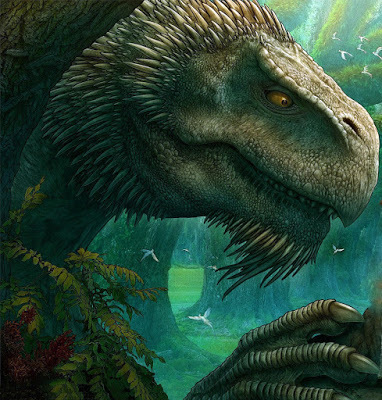
I can imagine some people who might read this article and go “No way.” Think about it for a few minutes as your reading this article and then make up your mind.
There were two different kinds of dragons.
1. The European winged dragon
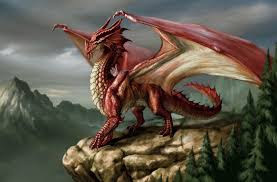
2. Chinese
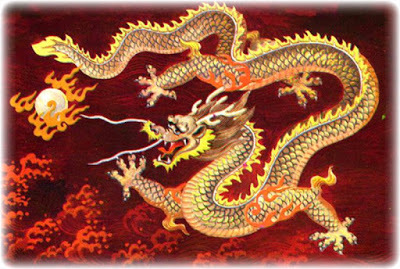
Russia had a take-off of the Chinese Dragon. It was a hydra, you know the one... with the three heads such as was in Jason and the Golden Fleece fame.
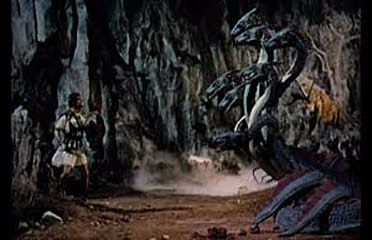
The name Dragon came from the Greek Meaning Serpent of huge size, Water snake.
Sometime in the middle ages they grew legs and began looking like a lizard. We may have a distant cousin to those dragons called the Komodo Dragon.
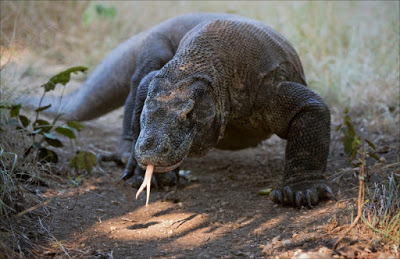
When dragons started out in this universe,they were mighty, knowledgeable, benevolent beings. They were associated with wisdom, had longevity and were wis0r than humans. They were good in this world of ours. Before Christians arrived, some were worshiped. After Christians they became demons. The priests led the people to believe that the dragon represented Satan and had to be killed off. A real person who is known as a dragon killer is St. George. There are paintings of him slaying the dragons. No evidence actually exists that he actually slayeda dragon, but I think he did.
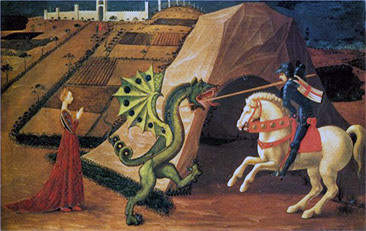
I’m making a confession. I believe dragons were real, just like I think there are flying saucers visiting earth. In time, all will be known. Some believe they were Ancestors of the Dinosaur. As of right now, they are a myth from every country around the globe. In the past some of these myths have been seen. I think the last sighting in the United States was in 1883 and a man observed a sea serpent from on board a ship. Just search for dragon and you can find all kinds of information about the creature.
Do you believe they existed? Too many sightings and story’s from over the world for them not to have existed at all. You’re the judge.
Lastly, something to make you smile!Merlin - Season 2, episode 5 'Beauty and the Beast.' Merlin and the "Laugh dragon" - "This isn't funny" *** Shirley McLain is a Young Adult fantasy author. Let's take a quick look at her latest book.Princess Adele's Dragon
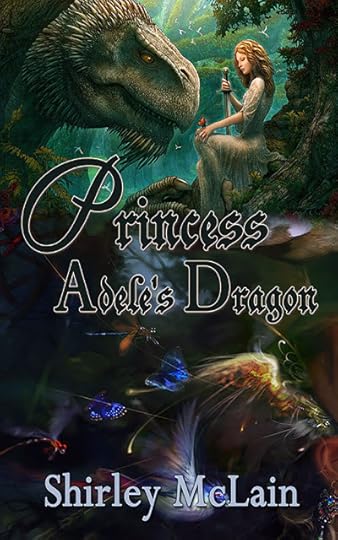 Princess Adele sets out to save her and her brothers Kingdom from a beast that threatens their way of life. What she encounters is totally unexpected and sets her on a new path. If you like gothic times with Kings, Princess's, Castles and bad guys then you will like this young adult fantasy. You will fall in love, hate the bad guy and fight war. Where can I buy this fabulous book? Amazon US Amazon UK About the author.
Princess Adele sets out to save her and her brothers Kingdom from a beast that threatens their way of life. What she encounters is totally unexpected and sets her on a new path. If you like gothic times with Kings, Princess's, Castles and bad guys then you will like this young adult fantasy. You will fall in love, hate the bad guy and fight war. Where can I buy this fabulous book? Amazon US Amazon UK About the author.
 Shirley McLain makes her home in Sapulpa Oklahoma with her husband and their fur family of four dogs and three cats. She also has two grown children, six grandchildren and twin great-grand sons. She has/is living a very full life. She retired after working thirty-two years as a RN and then began a full time writing carrier. She and her husband enjoy their five-acre country home. It is a perfect setting to let Shirley’s Muse work it’s magic. Shirley is an eclectic writer and has always enjoyed the writing process. Shortly after her retirement she woke up one morning with the thought that she was going to write a book. She didn’t stop writing until she’d finished her first book. So far she has published four books which are now on Amazon. Her goal is to bring as much enjoyment to her readers as deserve and want.
Shirley McLain makes her home in Sapulpa Oklahoma with her husband and their fur family of four dogs and three cats. She also has two grown children, six grandchildren and twin great-grand sons. She has/is living a very full life. She retired after working thirty-two years as a RN and then began a full time writing carrier. She and her husband enjoy their five-acre country home. It is a perfect setting to let Shirley’s Muse work it’s magic. Shirley is an eclectic writer and has always enjoyed the writing process. Shortly after her retirement she woke up one morning with the thought that she was going to write a book. She didn’t stop writing until she’d finished her first book. So far she has published four books which are now on Amazon. Her goal is to bring as much enjoyment to her readers as deserve and want. Useful links email Shirley_mclain@yahoo.com Website Facebook Twitter "I want to thank Mary for giving me the opportunity to participate on her blog. She is a true lover of writers and their work. Once again “Thank you, Mary.” Shirley McLain
Published on April 07, 2016 23:05
April 5, 2016
Guest Post - 'Author's Inspirations" Jayne Castel @JayneCastel #amreading
It is with the greatest of pleasure that I welcome Jayne Castel back onto the blog again. Jayne write the most beautiful Anglo-Saxon romances. I reviewed one of her novels, The Breaking Dawn, earlier on in the year and I absolutely loved it. You can read the review here.
Today, Jayne is going to tell us about the inspirations behind her latest novel...
Darkest Before Dawn
Let's check out the book...
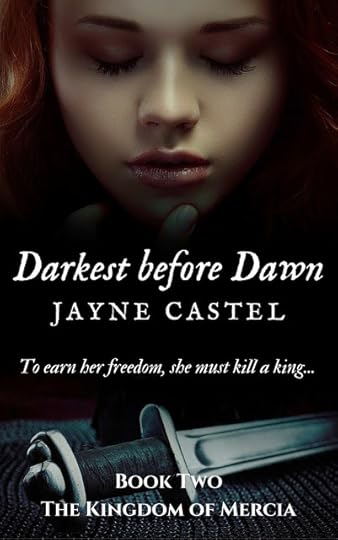
BRITAIN - 655 A.D.Princess Alchflaed of Northumbria is a spirited young woman who wishes to choose her own path. Unfortunately, highborn women in Anglo-Saxon England have no say in their choice of husband, and her father promises his daughter to the son of his bitterest enemy. This attempt at 'peace weaving' is not what is seems. Alchflaed's father orders her to murder her new husband. Charged with this treacherous task, she journeys south to her new home in Mercia.Maric – a seasoned warrior with a dark past – leads her escort. Princess and warrior find themselves strongly drawn to each other, but they must deny their feelings. Both bound by loyalty, neither can choose their own fates. Alchflaed's father has given her a terrible choice: to earn her freedom, she must kill a king.Could you tell us about your inspirations behind your latest book...
I have always loved Anglo-Saxon England. The myths, the language, the history – all of it.
When choosing a period within this era to set my stories in, I was particularly drawn to 7thCentury Britain. This was a crucial century. It was just before the Vikings began raiding the British coast, and long enough, after the Romans had left, for a true local culture to emerge. During the 7thCentury, Britain was split into rival kingdoms. The Kingdom of the East Angles dominated at the beginning of the century, before the Kingdom of Mercia rose in power. Then, the Kingdom of Northumbria emerged as a real force over the final years. DARKEST BEFORE DAWN is Book #2 in the Kingdom of Mercia series and, like my other stories, it is based around actual historical figures. What makes this novel different to all the rest is that I have used a real female historical figure in this book. The historical records of this period largely come from the writings of monks, who apart from mentioning female saints, wrote little about the women of the time. However, Princess Alchflaed of Northumbria was different.She was the daughter of Oswiu of Bernicia, a 7th Century king of Northumbria. In order to ‘peace-weave’ between Northumbria and Mercia, Alchflaed’s father arranged her marriage to Mercia’s new king, Paeda of Mercia. Now, I can’t reveal anything else about what happens to Alchflaed (as I risk spoilers!) but let’s just say that the story’s plot is also based on actual historical events – with a bit of artistic licence from me thrown in!
Where can I buy this fabulous book?
Amazon.com – Kindle edition
Amazon.com – Paperback edition
Amazon.co.uk – Kindle edition
Amazon.co.uk – Paperback edition
Grab a free copy of Castel's, Dark Under The Cover of Night.
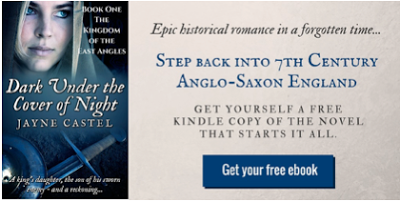
http://www.jaynecastel.com/home/sign-up
About the author.
 JAYNE CASTEL writes Early Medieval Historical Romance and Historical Fiction set in 7th Century Anglo-Saxon England.Two of her novels DARK UNDER THE COVER OF NIGHT and NIGHTFALL TILL DAYBREAK, reached the quarter finals of the Amazon Breakthrough Novel Awards in 2013 and 2014.
JAYNE CASTEL writes Early Medieval Historical Romance and Historical Fiction set in 7th Century Anglo-Saxon England.Two of her novels DARK UNDER THE COVER OF NIGHT and NIGHTFALL TILL DAYBREAK, reached the quarter finals of the Amazon Breakthrough Novel Awards in 2013 and 2014.
Jayne writes historical romance adventures about warrior heroes and strong-willed heroines. She weaves powerful love stories into meticulously researched stories about honor, valor, loyalty and vengeance.
Useful links.
Read Jayne's blog.
Connect with Jayne on Facebook.Follow Jayne on Twitter: @JayneCastelEmail Jayne at: contact@jaynecastel.comFollow Jayne on Pinterest
Today, Jayne is going to tell us about the inspirations behind her latest novel...
Darkest Before Dawn
Let's check out the book...

BRITAIN - 655 A.D.Princess Alchflaed of Northumbria is a spirited young woman who wishes to choose her own path. Unfortunately, highborn women in Anglo-Saxon England have no say in their choice of husband, and her father promises his daughter to the son of his bitterest enemy. This attempt at 'peace weaving' is not what is seems. Alchflaed's father orders her to murder her new husband. Charged with this treacherous task, she journeys south to her new home in Mercia.Maric – a seasoned warrior with a dark past – leads her escort. Princess and warrior find themselves strongly drawn to each other, but they must deny their feelings. Both bound by loyalty, neither can choose their own fates. Alchflaed's father has given her a terrible choice: to earn her freedom, she must kill a king.Could you tell us about your inspirations behind your latest book...
I have always loved Anglo-Saxon England. The myths, the language, the history – all of it.
When choosing a period within this era to set my stories in, I was particularly drawn to 7thCentury Britain. This was a crucial century. It was just before the Vikings began raiding the British coast, and long enough, after the Romans had left, for a true local culture to emerge. During the 7thCentury, Britain was split into rival kingdoms. The Kingdom of the East Angles dominated at the beginning of the century, before the Kingdom of Mercia rose in power. Then, the Kingdom of Northumbria emerged as a real force over the final years. DARKEST BEFORE DAWN is Book #2 in the Kingdom of Mercia series and, like my other stories, it is based around actual historical figures. What makes this novel different to all the rest is that I have used a real female historical figure in this book. The historical records of this period largely come from the writings of monks, who apart from mentioning female saints, wrote little about the women of the time. However, Princess Alchflaed of Northumbria was different.She was the daughter of Oswiu of Bernicia, a 7th Century king of Northumbria. In order to ‘peace-weave’ between Northumbria and Mercia, Alchflaed’s father arranged her marriage to Mercia’s new king, Paeda of Mercia. Now, I can’t reveal anything else about what happens to Alchflaed (as I risk spoilers!) but let’s just say that the story’s plot is also based on actual historical events – with a bit of artistic licence from me thrown in!
Where can I buy this fabulous book?
Amazon.com – Kindle edition
Amazon.com – Paperback edition
Amazon.co.uk – Kindle edition
Amazon.co.uk – Paperback edition
Grab a free copy of Castel's, Dark Under The Cover of Night.

http://www.jaynecastel.com/home/sign-up
About the author.
 JAYNE CASTEL writes Early Medieval Historical Romance and Historical Fiction set in 7th Century Anglo-Saxon England.Two of her novels DARK UNDER THE COVER OF NIGHT and NIGHTFALL TILL DAYBREAK, reached the quarter finals of the Amazon Breakthrough Novel Awards in 2013 and 2014.
JAYNE CASTEL writes Early Medieval Historical Romance and Historical Fiction set in 7th Century Anglo-Saxon England.Two of her novels DARK UNDER THE COVER OF NIGHT and NIGHTFALL TILL DAYBREAK, reached the quarter finals of the Amazon Breakthrough Novel Awards in 2013 and 2014. Jayne writes historical romance adventures about warrior heroes and strong-willed heroines. She weaves powerful love stories into meticulously researched stories about honor, valor, loyalty and vengeance.
Useful links.
Read Jayne's blog.
Connect with Jayne on Facebook.Follow Jayne on Twitter: @JayneCastelEmail Jayne at: contact@jaynecastel.comFollow Jayne on Pinterest
Published on April 05, 2016 23:04
April 3, 2016
The Idylls of the King - A Victorian Camelot Part 2
"...To strive, to seek, to find, and not to yeild..."The Idylls of the King.
Last time we started to looked at Alfred, Lord Tennyson's, The Idylls of the King -- if you missed the post you can read it here!
I am going to start where I left off...in this post I am going to explore the poem a little more.
Guinevere
"O Lancelot, if thou love me get thee hence."
And then they were agreed upon a night
(When the good King should not be there) to meet
And part for ever."
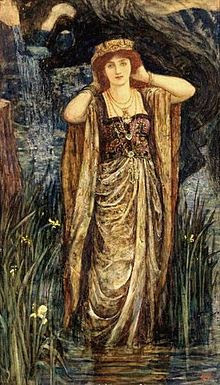 Guinevere by Henry Justice Ford c.1910
Guinevere by Henry Justice Ford c.1910
For the good of Camelot and to save her own reputation, Guinevere decides to end her affair with the noblest of knights. But there are many spies at court and their farewell is witnessed by Mordred.
Guinevere seeks sanctuary at the convent in Almesbury - she refuses to reveal her identity, but she does befriend a young novice.
But even the sanctuary of a convent can not protect Guinevere from who she is or what she has done. She learns that Arthur and Lancelot are at war, then later she hears of Mordred's usurpation.
Her friend, the novice, innocently describes about the glorious kingdom in her father's day....
"..before the coming of the sinful Queen..."
Arthur comes to her. She falls to his feet in grief. Arthur forgives her. Guinevere remains in the abbey, later becoming an Abbess.
And finally, lets take a look at...
The Passing of Arthur
"...To war against my people and my knights,The King who fights his people fights himself..."
Arthur kills the usurper, Mordred, but in turn, he receives a mortal wound.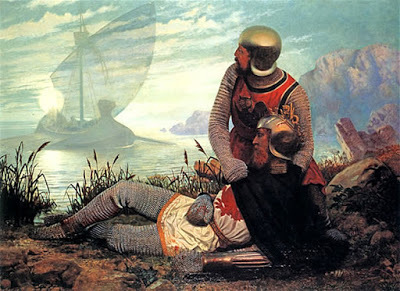 The Death of Arthur, by John Garrick 1862Scattered on the battlefield are the bodies of his knights. Only Sir Bedivere has made it through the fray. Sir Bedivere carries Arthur to Avalon. Arthur commands Bediever to throw Excalibur back into the lake. Bedivere is reluctant to throw such a great sword into a lake, but eventually he obeys this last order from his king. He watches with astonishment as the Lady of the Lake, takes back the sword. Arthur dies.
The Death of Arthur, by John Garrick 1862Scattered on the battlefield are the bodies of his knights. Only Sir Bedivere has made it through the fray. Sir Bedivere carries Arthur to Avalon. Arthur commands Bediever to throw Excalibur back into the lake. Bedivere is reluctant to throw such a great sword into a lake, but eventually he obeys this last order from his king. He watches with astonishment as the Lady of the Lake, takes back the sword. Arthur dies.
The Idylls of the King - A Victorian Camelot?
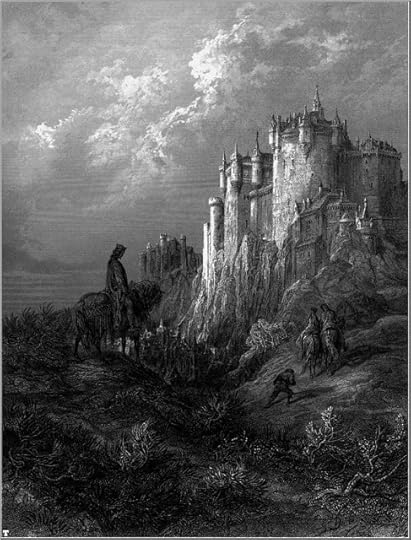
Gustave Doré's illustration of Camelot for Alfred, Lord Tennyson's Idylls of the King 1868
There was a great deal of interest in the notion of courtly-love back in the Middle Ages - this 'idea' was once again embraced in the Victorian era.Arthur is portrayed as the "ideal man" with Victorian values. His Camelot is a Victorian one.I have never felt truly comfortable with Arthur cast in this roll. He is the '...blameless..." one. He could do not wrong.It is Guinevere's immorality that brings down the kingdom - it had nothing whatsoever to do with Arthur - because he was just so...perfect?!Likewise, at the final battle, everyone, apart from Sir Bedivere dies...? I have never really bought that ending and I don't think I ever will - which is partly why I wrote The Du Lac Chronicles in the first place. Still, its a good poem...isn't it??!
Last time we started to looked at Alfred, Lord Tennyson's, The Idylls of the King -- if you missed the post you can read it here!
I am going to start where I left off...in this post I am going to explore the poem a little more.
Guinevere
"O Lancelot, if thou love me get thee hence."
And then they were agreed upon a night
(When the good King should not be there) to meet
And part for ever."
 Guinevere by Henry Justice Ford c.1910
Guinevere by Henry Justice Ford c.1910For the good of Camelot and to save her own reputation, Guinevere decides to end her affair with the noblest of knights. But there are many spies at court and their farewell is witnessed by Mordred.
Guinevere seeks sanctuary at the convent in Almesbury - she refuses to reveal her identity, but she does befriend a young novice.
But even the sanctuary of a convent can not protect Guinevere from who she is or what she has done. She learns that Arthur and Lancelot are at war, then later she hears of Mordred's usurpation.
Her friend, the novice, innocently describes about the glorious kingdom in her father's day....
"..before the coming of the sinful Queen..."
Arthur comes to her. She falls to his feet in grief. Arthur forgives her. Guinevere remains in the abbey, later becoming an Abbess.
And finally, lets take a look at...
The Passing of Arthur
"...To war against my people and my knights,The King who fights his people fights himself..."
Arthur kills the usurper, Mordred, but in turn, he receives a mortal wound.
 The Death of Arthur, by John Garrick 1862Scattered on the battlefield are the bodies of his knights. Only Sir Bedivere has made it through the fray. Sir Bedivere carries Arthur to Avalon. Arthur commands Bediever to throw Excalibur back into the lake. Bedivere is reluctant to throw such a great sword into a lake, but eventually he obeys this last order from his king. He watches with astonishment as the Lady of the Lake, takes back the sword. Arthur dies.
The Death of Arthur, by John Garrick 1862Scattered on the battlefield are the bodies of his knights. Only Sir Bedivere has made it through the fray. Sir Bedivere carries Arthur to Avalon. Arthur commands Bediever to throw Excalibur back into the lake. Bedivere is reluctant to throw such a great sword into a lake, but eventually he obeys this last order from his king. He watches with astonishment as the Lady of the Lake, takes back the sword. Arthur dies.The Idylls of the King - A Victorian Camelot?

Gustave Doré's illustration of Camelot for Alfred, Lord Tennyson's Idylls of the King 1868
There was a great deal of interest in the notion of courtly-love back in the Middle Ages - this 'idea' was once again embraced in the Victorian era.Arthur is portrayed as the "ideal man" with Victorian values. His Camelot is a Victorian one.I have never felt truly comfortable with Arthur cast in this roll. He is the '...blameless..." one. He could do not wrong.It is Guinevere's immorality that brings down the kingdom - it had nothing whatsoever to do with Arthur - because he was just so...perfect?!Likewise, at the final battle, everyone, apart from Sir Bedivere dies...? I have never really bought that ending and I don't think I ever will - which is partly why I wrote The Du Lac Chronicles in the first place. Still, its a good poem...isn't it??!
Published on April 03, 2016 05:47
April 1, 2016
The Idylls of Kings - A Victorian Camelot?
“This madness has come on us for our sins.” Idylls of the King.
As I have said before, there is something so appealing about King Arthur and his Knights that their story has become - I am not too sure how to express it - timeless?
The story, the legend - as it is now- has ancient roots, dating back to the 4th and 5th Centuries. The tales, traditionally oral in the telling, have been fascinating every generation from the very beginning. Can you imagine being some of the first people to sit and listen to the tales of Arthur? It must have been captivating.
We can surmise, that for a story to become so popular, it must have had a very good beginning.
Just take a look at some of the great bards who, through the centuries, have retold the tale. Nennius, Bede, Monmouth, Malory - to name but a small handful - have in their way, shaped the stories of Arthur and his Knights. And we love them for it.
Have you ever heard of the Victorian poet, Alfred, Lord Tennyson (1809 - 1892)?
Yes. No. Maybe...
Well, lets just check out one of his most famous poems...take a gander at this..
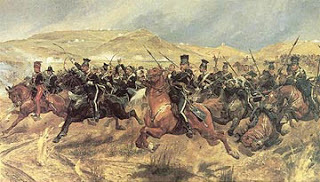 'Half a league, half a league, half a league onward,All in the valley of Death,Rode the six hundred."Forward, the Light Brigade!""Charge for the guns!" He said:Into the valley of DeathRode the six hundred.'The charge of the Light Brigade (1845)
'Half a league, half a league, half a league onward,All in the valley of Death,Rode the six hundred."Forward, the Light Brigade!""Charge for the guns!" He said:Into the valley of DeathRode the six hundred.'The charge of the Light Brigade (1845)
Charge of the Light Brigade by Richard Caton Woodville, Jr
Recognize him now? Good. Tennyson also wrote the Idylls of the King (first published in 1859) and that is what I am interested in. It is said that Tennyson was under a great amount of pressure to compose a poem of epic proportions. It is hardly surprising that Tennyson turned to the greatest British hero who ever lived, to draw inspiration from. And on the plus side...everyone loves a good King Arthur story. It was bound to be a hit!
Tennyson drew from the works of Malroy and the Mabinogion. The Idylls is actually split into parts - each dealing with a different aspect of the Arthurian tale - but with a slight Victorian twist on the story!
I am not going to go into too much detail of the Idyllas as a whole, for it would take too long and this post would go from being a few minutes read to an hour - and I am sure you have something you really should be doing, so I will keep it as short as I can. Needless to say, Tennyson drew on the usual cast-list - Arthur, Guinevere, Lancelot, Merlin.. they are all there. What I am going to do is just take a quick look at a few of my favourites.
The Coming of Arthur
There would be no Camelot without Arthur and this is where Tennyson's story begins. Britain is divided into waring principalities. Aurelius and Uther, had tried to unite the kingdoms, but they were not successful. It was only Arthur, who could bring unity to a divided land.
"...And through the puissance of his Table Round,Drew all their pretty princedoms under him,Their king and head, and made a realm, and reigned."
As one would expect, this first Idylls tells off Arthur coronation, his accession and his marriage to Leodogran's daughter, the fair Guinevere. The future is bright. Arthur is portrayed as the perfect man - someone to aspire to.
Surprisingly, Arthur isn't in every episode of the Idyll, but his influence / or presence, what ever you want to call it, most certainly is!
Gareth and Lynette
Oh the wows of the youngest son. This is one of my favourite stories. Gareth, brother to Gawain, starts life in Arthur's court disguised as a kitchen boy!
'So Gareth all for glory underwentThe sooty yoke of kitchen-wassalge;Ate with young lads his portion by the door,And couched at night with grimy kitchen-knaves.
And that is only the beginning of the adventure. I posted about Sir Gareth not so long ago - you can read his story...here! Needless to say, it is full of noble quests, adventure and a woman!
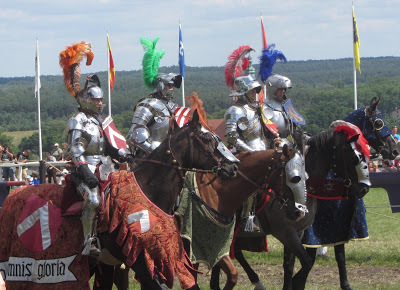
Lancelot and Elaine
'What fools those mortal's be....' Shakespeare
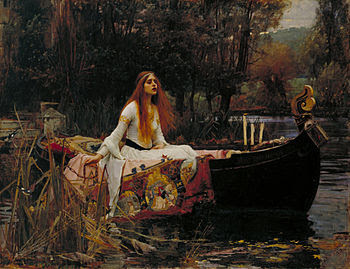 1888 John William Waterhouse. The Lady of Shalott (1888)
1888 John William Waterhouse. The Lady of Shalott (1888)
Once upon a time, Arthur came across two skeletons - one of which was wearing a crown which had nine diamonds. Arthur helped himself to the diamonds and at the annual tourneys, he awarded a diamond to the tournament winner.
Well, no one could fight in tournaments as well as Lancelot. He won the previous eight. Guinevere makes an excuse not to attend the ninth tournament and Lancelot does also. Fearing that the court will put two and two together, Lancelot agrees to attend the tournament, but in disguise. To aid his disguise, he agrees to wear Elaine's token of favour - which is something he has never done before "for any woman."
"...For silent, though he greeted her, she stoodRapt on his face as if it were a God's..."
Elaine admits her love to Lancelot, but when he tells her that their love can never be - she wishes for death. She dies.
Guinevere has a tantrum when Lancelot presents her with the diamonds. She throws them out the window - one of the diamonds falls on to Elaine's funeral barge - the diamond then slips into the water- thus fulfilling Elaine's strange dream.
Lancelot fears he has made the most monstrous mistake. He should have returned Elaine's love. He fears that Guinevere's love has turned bitter with jealousy. He wishes himself dead. Pleasant..isn't it??!
I think, even by these brief extracts of Tennyson's work, we can see the influence it has had on modern interpretations of the Arthurian story. I am going to leave it there for today, but no doubt I will come back at a later date and talk more about this very interesting 'epic' poem!
As I have said before, there is something so appealing about King Arthur and his Knights that their story has become - I am not too sure how to express it - timeless?
The story, the legend - as it is now- has ancient roots, dating back to the 4th and 5th Centuries. The tales, traditionally oral in the telling, have been fascinating every generation from the very beginning. Can you imagine being some of the first people to sit and listen to the tales of Arthur? It must have been captivating.
We can surmise, that for a story to become so popular, it must have had a very good beginning.
Just take a look at some of the great bards who, through the centuries, have retold the tale. Nennius, Bede, Monmouth, Malory - to name but a small handful - have in their way, shaped the stories of Arthur and his Knights. And we love them for it.
Have you ever heard of the Victorian poet, Alfred, Lord Tennyson (1809 - 1892)?
Yes. No. Maybe...
Well, lets just check out one of his most famous poems...take a gander at this..
 'Half a league, half a league, half a league onward,All in the valley of Death,Rode the six hundred."Forward, the Light Brigade!""Charge for the guns!" He said:Into the valley of DeathRode the six hundred.'The charge of the Light Brigade (1845)
'Half a league, half a league, half a league onward,All in the valley of Death,Rode the six hundred."Forward, the Light Brigade!""Charge for the guns!" He said:Into the valley of DeathRode the six hundred.'The charge of the Light Brigade (1845)Charge of the Light Brigade by Richard Caton Woodville, Jr
Recognize him now? Good. Tennyson also wrote the Idylls of the King (first published in 1859) and that is what I am interested in. It is said that Tennyson was under a great amount of pressure to compose a poem of epic proportions. It is hardly surprising that Tennyson turned to the greatest British hero who ever lived, to draw inspiration from. And on the plus side...everyone loves a good King Arthur story. It was bound to be a hit!
Tennyson drew from the works of Malroy and the Mabinogion. The Idylls is actually split into parts - each dealing with a different aspect of the Arthurian tale - but with a slight Victorian twist on the story!
I am not going to go into too much detail of the Idyllas as a whole, for it would take too long and this post would go from being a few minutes read to an hour - and I am sure you have something you really should be doing, so I will keep it as short as I can. Needless to say, Tennyson drew on the usual cast-list - Arthur, Guinevere, Lancelot, Merlin.. they are all there. What I am going to do is just take a quick look at a few of my favourites.
The Coming of Arthur
There would be no Camelot without Arthur and this is where Tennyson's story begins. Britain is divided into waring principalities. Aurelius and Uther, had tried to unite the kingdoms, but they were not successful. It was only Arthur, who could bring unity to a divided land.
"...And through the puissance of his Table Round,Drew all their pretty princedoms under him,Their king and head, and made a realm, and reigned."
As one would expect, this first Idylls tells off Arthur coronation, his accession and his marriage to Leodogran's daughter, the fair Guinevere. The future is bright. Arthur is portrayed as the perfect man - someone to aspire to.
Surprisingly, Arthur isn't in every episode of the Idyll, but his influence / or presence, what ever you want to call it, most certainly is!
Gareth and Lynette
Oh the wows of the youngest son. This is one of my favourite stories. Gareth, brother to Gawain, starts life in Arthur's court disguised as a kitchen boy!
'So Gareth all for glory underwentThe sooty yoke of kitchen-wassalge;Ate with young lads his portion by the door,And couched at night with grimy kitchen-knaves.
And that is only the beginning of the adventure. I posted about Sir Gareth not so long ago - you can read his story...here! Needless to say, it is full of noble quests, adventure and a woman!

Lancelot and Elaine
'What fools those mortal's be....' Shakespeare
 1888 John William Waterhouse. The Lady of Shalott (1888)
1888 John William Waterhouse. The Lady of Shalott (1888)Once upon a time, Arthur came across two skeletons - one of which was wearing a crown which had nine diamonds. Arthur helped himself to the diamonds and at the annual tourneys, he awarded a diamond to the tournament winner.
Well, no one could fight in tournaments as well as Lancelot. He won the previous eight. Guinevere makes an excuse not to attend the ninth tournament and Lancelot does also. Fearing that the court will put two and two together, Lancelot agrees to attend the tournament, but in disguise. To aid his disguise, he agrees to wear Elaine's token of favour - which is something he has never done before "for any woman."
"...For silent, though he greeted her, she stoodRapt on his face as if it were a God's..."
Elaine admits her love to Lancelot, but when he tells her that their love can never be - she wishes for death. She dies.
Guinevere has a tantrum when Lancelot presents her with the diamonds. She throws them out the window - one of the diamonds falls on to Elaine's funeral barge - the diamond then slips into the water- thus fulfilling Elaine's strange dream.
Lancelot fears he has made the most monstrous mistake. He should have returned Elaine's love. He fears that Guinevere's love has turned bitter with jealousy. He wishes himself dead. Pleasant..isn't it??!
I think, even by these brief extracts of Tennyson's work, we can see the influence it has had on modern interpretations of the Arthurian story. I am going to leave it there for today, but no doubt I will come back at a later date and talk more about this very interesting 'epic' poem!
Published on April 01, 2016 06:38
March 31, 2016
Friday Knights - Mordred - a good knight or a villainous traitor?
The traitor who brought down the greatest Kingdom and the greatest King of all times.
Okay, so most of us have heard of Mordred. He did, along with Lancelot, play a pinnacle part in the fall of Arthur at the Battle of Camlann.
Mordred was the son of Morgause - Arthur's sister - but there is debate as to who his father was. Some say his father was Morgauses' husband, King Lot of Orkney, which would make Gawain his brother. While others say he was Arthur's illegitimate son, begot with his sister. Poor kid, no wonder he was so messed up
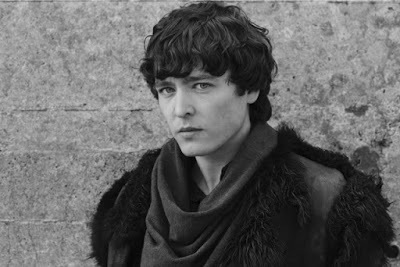 Alexander Vlahos - played Mordred in Merlin
Alexander Vlahos - played Mordred in Merlin
But what else do we know of him?
Firstly, Mordred is mentioned really early on in the tales of Arthur and his knights.
"Gueith Camlann in qua Arthur et Medraut corruerunt."
("The strife of Camlann, in which Arthur and Medraut fell.")
This was what was written in Annales Cambriae for the year 537.
The Annales Camriae was written between the years 960 - 970. Although they cannot be counted as a primary source, they do however draw on older stories - probably verbal - of the telling of this great battle. If you have not already noticed, the quote above says nothing about Arthur fighting Mordred at Camlann. It states that both men fell (died) at Camlann - has Mordred therefore been wronged in the later telling of the tale?
So let's assume that Mordred was a knight, who fought bravely by Arthur's side and died next to him in battle. This begs the question..who is responsible for turning Mordred into a villain?
Come on, can't you guess??!!
Yes, that's right. Geoffrey of Monmouth strikes again.
It is Monmouth who suggests that it was Mordred, who was left in charge of Camelot while Arthur crossed the channel to rage war on Emperor Lucius of Rome. It is Monmouth who states that Mordred saw this as an opportunity to take Arthur's throne. It is Monmouth who states that Mordred not only took the kingdom, but also forced Guinevere to marry him. It is Monmouth who states that Mordred and Arthur met at Camlann.
And we believed him.
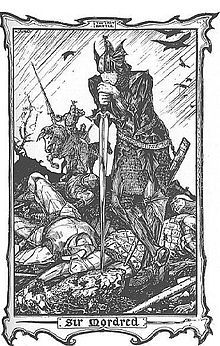 Sir Mordred H.R Ford (1902)
Sir Mordred H.R Ford (1902)
In the ancient Welsh texts Mordred is associated with Camlann. The two seem to go hand in hand. But Monmouth's casting of Mordred as the villain was soon accepted as the truth and others expanded upon this story making Mordred something of an Anti-Christ - or an Anti-Arthur.
Time passes and the story changes. Lancelot enters the tale and some of Mordred's villainous activities are passed on to Lancelot - such as the affair with Guinevere. Malory goes as far as saying that Guinevere fled from Mordred's disgusting proposal and hid in the Tower of London, which I always found considerably clever of her, considering the Tower was not built until after the Norman invasion! But hey, anything is possible in Arthur's Britain.
In the Lancelot-Grail Cycle, Mordred was succeeded by his sons. The sons, like their father, have treachery running through their veins. In older text it is Constantine who tracks the brothers down and kills them. In later versions it is Lancelot and Bors.
But the extent of Mordred's treachery does not end there.
"...him who, at one blow, had chest and shadow / shattered by Arthur's hand..."
(Canto XXXII)
This quote is from Dante's Inferno. If you seek Mordred you would find him in the lowest circle of Hell - a place set aside for traitors.
Mordred is cast as a magically Druid boy in the BBC show Merlin (2008 - 2012). He becomes a Knight of Camelot and has no notion of treachery until his beloved is sentenced to death. Ironically, if Merlin had accepted Mordred as a source of good, then Arthur would never have died - but hey, what kind of story would that have made?
Merlin 5x02 "Arthur's Bane Part 2" Mordred is knighted
So there we have it. Of all the knights, I think Mordred is probably the least understood and the most wronged. Monmouth needed a villain and Mordred was it. I like to think that Mordred did not turn against Arthur, but fought by his side at Camlann - sacrificing his life, for his King. What do you think? Be sure to leave a comment below.
Okay, so most of us have heard of Mordred. He did, along with Lancelot, play a pinnacle part in the fall of Arthur at the Battle of Camlann.
Mordred was the son of Morgause - Arthur's sister - but there is debate as to who his father was. Some say his father was Morgauses' husband, King Lot of Orkney, which would make Gawain his brother. While others say he was Arthur's illegitimate son, begot with his sister. Poor kid, no wonder he was so messed up
 Alexander Vlahos - played Mordred in Merlin
Alexander Vlahos - played Mordred in Merlin But what else do we know of him?
Firstly, Mordred is mentioned really early on in the tales of Arthur and his knights.
"Gueith Camlann in qua Arthur et Medraut corruerunt."
("The strife of Camlann, in which Arthur and Medraut fell.")
This was what was written in Annales Cambriae for the year 537.
The Annales Camriae was written between the years 960 - 970. Although they cannot be counted as a primary source, they do however draw on older stories - probably verbal - of the telling of this great battle. If you have not already noticed, the quote above says nothing about Arthur fighting Mordred at Camlann. It states that both men fell (died) at Camlann - has Mordred therefore been wronged in the later telling of the tale?
So let's assume that Mordred was a knight, who fought bravely by Arthur's side and died next to him in battle. This begs the question..who is responsible for turning Mordred into a villain?
Come on, can't you guess??!!
Yes, that's right. Geoffrey of Monmouth strikes again.
It is Monmouth who suggests that it was Mordred, who was left in charge of Camelot while Arthur crossed the channel to rage war on Emperor Lucius of Rome. It is Monmouth who states that Mordred saw this as an opportunity to take Arthur's throne. It is Monmouth who states that Mordred not only took the kingdom, but also forced Guinevere to marry him. It is Monmouth who states that Mordred and Arthur met at Camlann.
And we believed him.
 Sir Mordred H.R Ford (1902)
Sir Mordred H.R Ford (1902)In the ancient Welsh texts Mordred is associated with Camlann. The two seem to go hand in hand. But Monmouth's casting of Mordred as the villain was soon accepted as the truth and others expanded upon this story making Mordred something of an Anti-Christ - or an Anti-Arthur.
Time passes and the story changes. Lancelot enters the tale and some of Mordred's villainous activities are passed on to Lancelot - such as the affair with Guinevere. Malory goes as far as saying that Guinevere fled from Mordred's disgusting proposal and hid in the Tower of London, which I always found considerably clever of her, considering the Tower was not built until after the Norman invasion! But hey, anything is possible in Arthur's Britain.
In the Lancelot-Grail Cycle, Mordred was succeeded by his sons. The sons, like their father, have treachery running through their veins. In older text it is Constantine who tracks the brothers down and kills them. In later versions it is Lancelot and Bors.
But the extent of Mordred's treachery does not end there.
"...him who, at one blow, had chest and shadow / shattered by Arthur's hand..."
(Canto XXXII)
This quote is from Dante's Inferno. If you seek Mordred you would find him in the lowest circle of Hell - a place set aside for traitors.
Mordred is cast as a magically Druid boy in the BBC show Merlin (2008 - 2012). He becomes a Knight of Camelot and has no notion of treachery until his beloved is sentenced to death. Ironically, if Merlin had accepted Mordred as a source of good, then Arthur would never have died - but hey, what kind of story would that have made?
Merlin 5x02 "Arthur's Bane Part 2" Mordred is knighted
So there we have it. Of all the knights, I think Mordred is probably the least understood and the most wronged. Monmouth needed a villain and Mordred was it. I like to think that Mordred did not turn against Arthur, but fought by his side at Camlann - sacrificing his life, for his King. What do you think? Be sure to leave a comment below.
Published on March 31, 2016 23:37
Nicholas Paschall, talks of the mythological creatures, more commonly known as Vampires! @Nelfeshne
I would like to welcome fellow author, Nicholas Paschall, on to the blog today. Nicholas is going to take us on a journey and explore the history of the Vampire through popular fiction. Vampires. The very word conjures up images of red-eyed, pale skinned angelic figures that feast on human blood, strangely erotic yet mind-numbingly dangerous at the same time. From the innocent looking child vampire to the androgynous ancient, they range in all shapes, colors and sizes. In books and cinema, we have three categories of vampires we can look at and analyze: the beautiful, the hideous, and the weird.
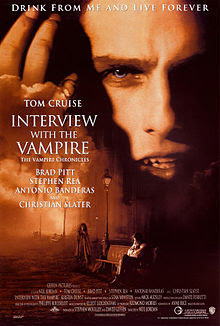
The beautiful can be seen in Anne Rice’s Interview with the Vampire and Stephanie Meyer’s Twilight saga. Both highlight vampires as both dangerous and attractive creatures, with pale skin and taut muscles that provide preternatural strength. This is a step away from the original vampire story by Bram Stoker but it is a creative move. Meyer’s vampire’s aren’t even harmed by sunlight, though they do adopt a hostile stance against werewolves as it seems to be a classic route when the two inhuman species meet. Other instance of beautiful vampires with werewolf aggression are seen in the box office thriller Underworld series, and to a lesser extent Van Helsing and the dry comedy Dark Shadows, which was based off of a television soap opera of a supernatural family not unlike the Munster’s, though far more dangerous.
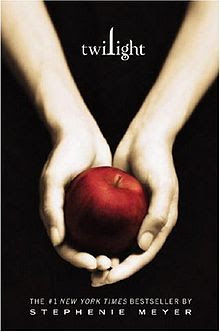
Twilight (5/11) Movie CLIP - I Know What You Are (2008) HD The second category is the hideous vampires, vampires that shed their mortal skin to take on their true appearance, that of a monster. These vampires represent a more defined fear of the unknown that humans face every day. Unlike a shuffling zombie or a serial killer, the hideous vampire is almost unkillable. You’ve seen them in film: in Underworld: Evolution you have one of the ancient vampires infused with werewolf blood, creating a monster that is nigh indestructible. Bullets, silver swords, and holy relics do little to this creature. They finally manage to slay it through a combination of luck and skill from a vampire/werewolf hybrid. In Nosferatuthey went to great lengths to pull the vampire’s appearance away from that of a human, making the monster possess spindly fingers ending in wicked hooks, bulging eyes with a misshapen bald head and elongated ears. He crept silently around his lair and your home, and killed those he drank from. The difference between the beautiful and the hideous is that the beautiful doesn’t necessarily kill the person they feed upon. The hideous always kills their victim, making them more monstrous than ever as they take life away from the natural to fuel the unnatural.
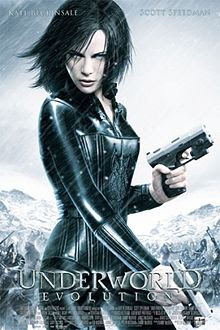
Now the weird is a category that only applies to vampires that straddle the line between the first two categories. In Rachel Caine’s Morganville Vampire book series, we have a community of vampires living openly with the town residents while hiding from college students who attend the local university. They have blood vans that come by and take blood “donations” from residents to feed the vampires, while some vampires prefer to hunt their prey. Some have gone mad over their centuries of life while others have grown detached from their human side. The older they get the more radical they shift in an emotional direction. The father of the vampires, Bishop, comes to town and tries to usurp control from his daughter Amelia while using the humans of town as bait. He wants a book that details how to create a new vampire, as it is a lost art and their numbers are dwindling due to a rare disease that slowly drives them into an animal-like state, more beast than anything else that seeks warm blood.
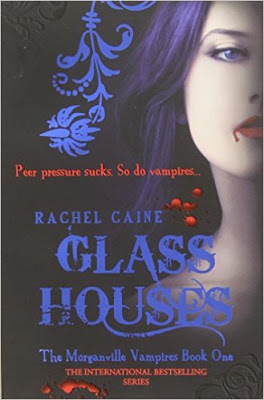
In this series we have vampires like Myrnin who is a mad alchemist, among other things. He synthesizes drugs to stave off the madness in the vampires and often comes close to killing his semi-willing apprentice Claire Danvers. Myrnin is erratic and strange, with humor that none get unless you are amused by mad antics of something that could easily snap you in half. He dresses as a Pierrot for a Halloween ball while forcing Claire to dress as the Harlequin, because he believes the sad clown Pierrot is actually the funny and dangerous one. This amuses Bishop, who is instantly reminded why he doesn’t like Myrnin who insults him, then attacks him with a dagger while cackling madly, proving he is just as strong as the elder vampire before fleeing. Then you have vampires that have detached from humanity entirely, like Mr. Pennywell. Described as an “androgynous dummy”. Mr. Pennywell is an amoral vampire that will follow the laws of the town so long as they please him. He corners people and often attempts to kill them, as he remembers the days where vampires lurked in the dark and fed well.
Then we have Amelia, the governess if the town. She offers protection to the humans with magical homes to prevent vampire intrusion, holds up laws and keeps the vampire population in check. She’s a preternatural beauty that is weak from the sands of time wearing her down. She creates the first new vampire in decades as she gets a hold of the book, creating controversy amidst the community.
 Then you have movies where the weird vampires come out to play. In foreign films you have Vampire Girl vs. Frankenstein Girl, a horror/comedy where a vampire tricks a boy into eating her blood, making him into a vampire. The girl that likes him dies through a tragic accident, but her mad scientist father reassembles her with the parts from various club members, making her a bizarre construct of considerable might. The reason this falls into weird is some of her powers lie in her cloak, which allow her flight, as well as her ability to walk about in daylight. She breaks norms and converts new vampires through unique methods. In the end she triumphs using swords made of blood, and fights a trio of monster school girls by pulling their skulls from their heads and throwing them in a pile.
Then you have movies where the weird vampires come out to play. In foreign films you have Vampire Girl vs. Frankenstein Girl, a horror/comedy where a vampire tricks a boy into eating her blood, making him into a vampire. The girl that likes him dies through a tragic accident, but her mad scientist father reassembles her with the parts from various club members, making her a bizarre construct of considerable might. The reason this falls into weird is some of her powers lie in her cloak, which allow her flight, as well as her ability to walk about in daylight. She breaks norms and converts new vampires through unique methods. In the end she triumphs using swords made of blood, and fights a trio of monster school girls by pulling their skulls from their heads and throwing them in a pile. The weird vampire is perhaps the most human of us all, as they have human emptions (sometimes to a dangerous extent) and a conscience that makes them ponder their actions. Some are good, some are bad; they’re humans with special powers. Judging them is a case by case basis, unlike the beautiful or hideous, who are much more one-dimensional than the weird.
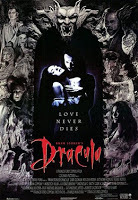 Now if you think that my evaluation of vampires isn’t encompassing enough, that’s fine. There has almost been a century of vampire lore that has been created thanks to Bram Stoker and Nosferatu, so I’ve no doubt missed something. But think on the subjects next time you see a vampire movie or read a novel.
Now if you think that my evaluation of vampires isn’t encompassing enough, that’s fine. There has almost been a century of vampire lore that has been created thanks to Bram Stoker and Nosferatu, so I’ve no doubt missed something. But think on the subjects next time you see a vampire movie or read a novel. Nicholas Paschall is a horror fiction writer. Let's take a look at his latest book.
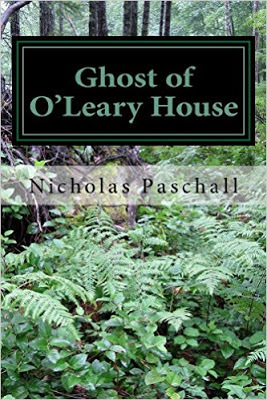 David is in college and just keeps screwing up. After his latest mistake of throwing a huge party while his parents were out of town, his mother decides to leave him stranded at his Grandmother's house in Alice Grove. What starts out as a horrible idea blossoms into a nightmare as ghosts, Witches, and curses come alive in the sleepy town. How will David handle it all? Where can I purchase this fabulous book? Amazon US Amazon UK Amazon CAN About the author.
David is in college and just keeps screwing up. After his latest mistake of throwing a huge party while his parents were out of town, his mother decides to leave him stranded at his Grandmother's house in Alice Grove. What starts out as a horrible idea blossoms into a nightmare as ghosts, Witches, and curses come alive in the sleepy town. How will David handle it all? Where can I purchase this fabulous book? Amazon US Amazon UK Amazon CAN About the author.
 I'm just a humble ghost in the machine, a lurking specter in the darker reaches of the internet. I publish the dreams best left unsaid because I believe they should be heard. I graduated from the Univerity of Texas at San Antonio with a degree in History, which basically means I'm a researcher. My desktop is littered with projects that I hop to and fro like a mad cricket, working here and tinkering there. I have a website that I update five times a week at minimum. Hope to see you there!
I'm just a humble ghost in the machine, a lurking specter in the darker reaches of the internet. I publish the dreams best left unsaid because I believe they should be heard. I graduated from the Univerity of Texas at San Antonio with a degree in History, which basically means I'm a researcher. My desktop is littered with projects that I hop to and fro like a mad cricket, working here and tinkering there. I have a website that I update five times a week at minimum. Hope to see you there!
Published on March 31, 2016 23:11
March 30, 2016
Only 0.99 on Kindle - Limited time only - The Du Lac Chronicles
"...the intimacy in their relationship is tender, vulnerable and real, one of the best romantic relationships I've read..I loved, loved, loved this book and can't wait to read the next in the series..." M.M. Carter, Amazon Reviewer
* Only 0.99 on Kindle - Limited time only *
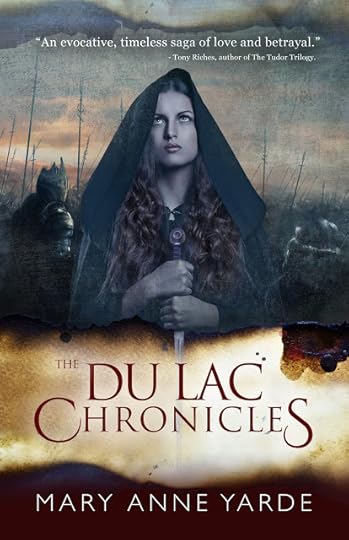
A generation after Arthur Pendragon ruled, Briton lies fragmented into warring kingdoms and principalities.
“It is dangerous to become attached to a du Lac. He will break your heart, and you will not recover.”
So prophesies a wizened healer to Annis, daughter of King Cerdic of Wessex. If there is truth in the old crone’s words, they come far too late for Annis, who defies father, king, and country to save the man she loves.
Alden du Lac, once king of Cerniw, has nothing. Betrayed by Cerdic, Alden’s kingdom lies in rubble, his fort razed to the ground and his brother Merton missing, presumably dead. He has only one possession left worth saving: his heart. And to the horror of his few remaining allies, he gives that to the daughter of his enemy. They see Annis, at best, as a bargaining chip to avoid war with her powerful father. At worst, they see a Saxon whore with her claws in a broken, wounded king.
Alden has one hope: When you war with one du Lac, you war with them all. His brother Budic, King of Brittany, could offer the deposed young king sanctuary—but whether he will offer the same courtesy to Annis is far less certain.
Book Extract.
"...I hear you surrendered,” he said, a faint hint of glee in his eyes.
Alden, who was still contemplating what Oeric had told him about his brother, looked up. “Good news travels fast.”
“As does bad.”
“It wasn’t something I wanted to do. I had no choice.”
“That is what they all say, isn’t it?” Oeric laughed. “And who is this fine-looking woman by your side?” Oeric turned his attention to Annis.
Annis raised her head reluctantly. She had never met King Oeric, although she had heard a lot about him, mainly about his skill as a warrior from her brother, who liked to talk about worthy opponents to anyone who cared to listen. His appearance surprised her. Oeric was an old man, older than her father was. His hair was a soft white, his face wrinkled. His eyes were watery and the colour of a foggy blue sky. His clothes were lavish and skilfully embroidered. He smiled a welcome, showing gaps in his mouth where his teeth had been knocked out. Alden was right; she could see he was mentally undressing her with his eyes. He made her feel sick.
“What is your name, my dear?” Even the way he spoke to her was lewd.
“Annis.”
“Annis?” Oeric raised his bushy white eyebrows. “A pretty name for a pretty girl.” He licked his lips. “And what are you doing in the company of Lord du Lac?”
Alden had to stop himself from saying king. The slight on Oeric’s part hit its mark well.
Annis nervously glanced at Alden. “I am his wife,” she whispered, fearing the lie.
“His wife?” he whispered back and then he laughed, turning his attention away from her and back to Alden.
“You lose a kingdom, but have the time to find a wife. Where did you pick her up? The dungeons?” Those gathered in the hall laughed at their king’s jest. “What did you do, my dear? Was it something horrid?” he asked Annis, stepping closer to her.
Alden’s arm shot out and pulled her closer to him. “The where and why has nothing to do with you.” There was a warning in his tone that he meant for Oeric to hear.
“You speak to me like a King. You forget yourself,” Oeric said, his eyes blazing with anger. “You cannot speak to me as an equal anymore. Annis, Annis.” He rolled her name over his tongue. “Of Wessex?” he stated, his eyes widening. “You married his daughter?”
* Only 0.99 on Kindle - Limited time only *Where can I get my hands on a copy of this book?
Amazon US Amazon UK
About the author Born in Bath, England, Mary Anne Yarde grew up in the southwest of England, surrounded and influenced by centuries of history and mythology. Glastonbury—the fabled Isle of Avalon—was a mere fifteen-minute drive from her home, and tales of King Arthur and his knights were part of her childhood.
Born in Bath, England, Mary Anne Yarde grew up in the southwest of England, surrounded and influenced by centuries of history and mythology. Glastonbury—the fabled Isle of Avalon—was a mere fifteen-minute drive from her home, and tales of King Arthur and his knights were part of her childhood.
At nineteen, Yarde married her childhood sweetheart and began a bachelor of arts in history at Cardiff University, only to have her studies interrupted by the arrival of her first child. She would later return to higher education, studying equine science at Warwickshire College. Horses and history remain two of her major passions.
Yarde keeps busy raising four children and helping run a successful family business. She has many skills but has never mastered cooking—so if you ever drop by, she (and her family) would appreciate some tasty treats or a meal out!
Useful Links.
Website
Facebook
Twitter
Blog
* Only 0.99 on Kindle - Limited time only *

A generation after Arthur Pendragon ruled, Briton lies fragmented into warring kingdoms and principalities.
“It is dangerous to become attached to a du Lac. He will break your heart, and you will not recover.”
So prophesies a wizened healer to Annis, daughter of King Cerdic of Wessex. If there is truth in the old crone’s words, they come far too late for Annis, who defies father, king, and country to save the man she loves.
Alden du Lac, once king of Cerniw, has nothing. Betrayed by Cerdic, Alden’s kingdom lies in rubble, his fort razed to the ground and his brother Merton missing, presumably dead. He has only one possession left worth saving: his heart. And to the horror of his few remaining allies, he gives that to the daughter of his enemy. They see Annis, at best, as a bargaining chip to avoid war with her powerful father. At worst, they see a Saxon whore with her claws in a broken, wounded king.
Alden has one hope: When you war with one du Lac, you war with them all. His brother Budic, King of Brittany, could offer the deposed young king sanctuary—but whether he will offer the same courtesy to Annis is far less certain.
Book Extract.
"...I hear you surrendered,” he said, a faint hint of glee in his eyes.
Alden, who was still contemplating what Oeric had told him about his brother, looked up. “Good news travels fast.”
“As does bad.”
“It wasn’t something I wanted to do. I had no choice.”
“That is what they all say, isn’t it?” Oeric laughed. “And who is this fine-looking woman by your side?” Oeric turned his attention to Annis.
Annis raised her head reluctantly. She had never met King Oeric, although she had heard a lot about him, mainly about his skill as a warrior from her brother, who liked to talk about worthy opponents to anyone who cared to listen. His appearance surprised her. Oeric was an old man, older than her father was. His hair was a soft white, his face wrinkled. His eyes were watery and the colour of a foggy blue sky. His clothes were lavish and skilfully embroidered. He smiled a welcome, showing gaps in his mouth where his teeth had been knocked out. Alden was right; she could see he was mentally undressing her with his eyes. He made her feel sick.
“What is your name, my dear?” Even the way he spoke to her was lewd.
“Annis.”
“Annis?” Oeric raised his bushy white eyebrows. “A pretty name for a pretty girl.” He licked his lips. “And what are you doing in the company of Lord du Lac?”
Alden had to stop himself from saying king. The slight on Oeric’s part hit its mark well.
Annis nervously glanced at Alden. “I am his wife,” she whispered, fearing the lie.
“His wife?” he whispered back and then he laughed, turning his attention away from her and back to Alden.
“You lose a kingdom, but have the time to find a wife. Where did you pick her up? The dungeons?” Those gathered in the hall laughed at their king’s jest. “What did you do, my dear? Was it something horrid?” he asked Annis, stepping closer to her.
Alden’s arm shot out and pulled her closer to him. “The where and why has nothing to do with you.” There was a warning in his tone that he meant for Oeric to hear.
“You speak to me like a King. You forget yourself,” Oeric said, his eyes blazing with anger. “You cannot speak to me as an equal anymore. Annis, Annis.” He rolled her name over his tongue. “Of Wessex?” he stated, his eyes widening. “You married his daughter?”
* Only 0.99 on Kindle - Limited time only *Where can I get my hands on a copy of this book?
Amazon US Amazon UK
About the author
 Born in Bath, England, Mary Anne Yarde grew up in the southwest of England, surrounded and influenced by centuries of history and mythology. Glastonbury—the fabled Isle of Avalon—was a mere fifteen-minute drive from her home, and tales of King Arthur and his knights were part of her childhood.
Born in Bath, England, Mary Anne Yarde grew up in the southwest of England, surrounded and influenced by centuries of history and mythology. Glastonbury—the fabled Isle of Avalon—was a mere fifteen-minute drive from her home, and tales of King Arthur and his knights were part of her childhood.At nineteen, Yarde married her childhood sweetheart and began a bachelor of arts in history at Cardiff University, only to have her studies interrupted by the arrival of her first child. She would later return to higher education, studying equine science at Warwickshire College. Horses and history remain two of her major passions.
Yarde keeps busy raising four children and helping run a successful family business. She has many skills but has never mastered cooking—so if you ever drop by, she (and her family) would appreciate some tasty treats or a meal out!
Useful Links.
Website
Blog
Published on March 30, 2016 23:48
March 29, 2016
Guest Post - "Author's Inspirations." James Collins @JamesDomCollins
It is my pleasure to welcome Historical Fiction author, James Collins, on to the blog today to talk about the inspirations behind his latest novel...
Sol Limitis - Book One Of The Frontier Trilogy.
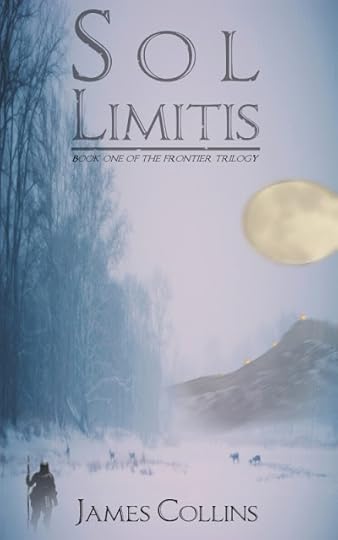
367 AD
A battle-hardened soldier is sent to the frozen north of Britannia on a personal mission from the Emperor. Conducting a desperate investigation from a hostile garrison on the crumbling frontier of Hadrian’s Wall, Atellus must struggle to survive in a wild and lawless land torn apart by the death throes of an over-stretched empire.
Where did the inspiration behind your book come from?
One of my favourite books is Blood Meridian by Cormac McCarthy. A searing and brutal novel of America’s violent frontier, Blood Meridian follows the infamous Glanton Gang, a group of mercenary scalp-hunters working the US/Mexico border in the mid-C19th. It was this concept of the anti-Western which first piqued my curiosity and instigated a lengthy period of thought and research which culminated in my novel, Sol Limitis.
The key concept behind Sol Limitis was to re-create this type of revisionist Western in the frozen North of Britain; a novel which captured the extremes and brutalities of the period in a daunting and visceral manner, and which explored this notion of liminal space, investigated the concept of the Frontier and everything it entailed.
History is ripe with options for a setting for this sort of novel, but I chose a period I was already familiar with from my studies and work as an archaeologist: late Roman Britain. Even a small amount of research attested to lengthy periods of intrigue and action, hardship and depredations. The keystone notion of the Frontier was well-served by that most famous icon of the limit of romanitas: Hadrian’s Wall.
The concept of liminality, and its various permutations, drove the novel from then on: a physical front-line separating two ostensibly discrete and mutually hostile tribes (‘Romans’ and ‘Barbarians’); a cultural boundary distinguishing between two peoples; a temporalwatershed marking the decline of Roman Britain and the rise of Tribal Britain; and an ethereal frontier separating Christianity from paganism. But perhaps the crux of this liminality resides in the blurring of all these boundaries: because of the physical, temporal and ideological location on the cusp of two extremes, the frontier exists as a place utterly distinct from either camp, drawing energy from both sides and maintaining its own distinct identity.
It was the concept of this lawless, broken hinterland that inspired me as the perfect setting for my novel.
Physical:The physical frontier in Sol Limitis is represented by Hadrian’s Wall, the huge stone and timber-built fortification which delineated the limit of Roman control. It existed as a rough militarised zone fortified by garrison towns and forts. The geographical area was defined by military authority, frequent violent clashes with hostile tribes, and its separation from more ‘civilised’ bastions of romanitassuch as the larger towns further south.
There was eventual fall-out from this physical and ideological separation between the Wall and the seat of the Western Roman Empire (which at the time had moved from Rome to Treves, modern-day Trier): notably widespread poverty and corruption. The travails of the local populace – military and civilian – were likely to have been incessant, and the Wall itself served as a physical reminder of this hard life: a bastion of security and, concomitantly, danger, a constant brooding character sulking in the background.
Cultural:The northern frontier of Roman Britain separated the two distinct factions of Rome and the ‘Barbarians’ beyond. Although there were multiple discrete tribes beyond the Wall, the period in which Sol Limitis is set is the prelude to the Great Conspiracy whereby the disparate tribes united to attack their common enemy: the Romano-British.
Despite this, it is likely that the liminal zone of the frontier was home to a confused assemblage of peoples on both sides of the Wall. Most of the limatanei (the Romano-British frontier soldiers) would have shared kinship and sensitivities with the northern tribes, and once the pay, food and support of the Roman infrastructure increasingly dried up as the C4th wore on, many must have queried where their true loyalties lay. Certainly we know that the areani (roving spies working for Rome beyond the frontier) betrayed their paymasters and aided the assault against the Romano-British, and it is likely that at least some forts along the Wall openly deserted their posts and allowed the tribes to pass through to lay waste to the Roman-held land beyond.
Temporal:The temporal aspect of the frontier is represented by the blending of Roman Britain and Tribal Britain. In the mid to late C4th, Roman Britain was rapidly sliding beyond the reach of the empire. Depleted of military, wealth and resources, Britain was subject to increasingly dire circumstances whether from political and religious purges, escalating tribal insurrections or disease and poverty. Hindsight tells us that Rome finally abandoned Britain in AD410, marking the start of the so-called ‘Dark Ages’, a migration period whereby Britain, lacking focused unified resistance, succumbed to the pressure from invading tribes: Picts, Attacots and Scots from the north and Saxons, Jutes and Angles from the East. We see this liminal period of history as a time when the sol limitis (Sun of the Frontier) of Rome is waning and the stars of the great tribal leaders (precursors to the likes of Alaric and Vortigern) are in ascendance.
Ethereal:Celtic Christian culture has the concept of thin places, those liminal areas that straddle the border between the physical and the ethereal, linking earth and heaven, men and gods. The C4th northern frontier was at this point (since Constantius’s conversion earlier that century) attempting to be the border between Christianity and paganism. Although Christianity became embraced by increasingly hard-line emperors, these were often interspersed with rulers favourable of pagans, which led to a confused and troublesome mix. Roman culture had always been welcoming of new local religions and syncretism was its main tactic for centuries, as different religions were blended together and worshipped anew.
Despite the best efforts of the Christian emperors, Britain still remained heavily pagan, and the closer to the northern frontier, the less hold Christianity had upon the common folk. Religion was important to soldiers, and the hard-pressed limitanei of Hadrian’s Wall had little else for comfort. As such it was a key area for ongoing pagan practices to Celtic gods such as Cernunnos and Belatu-Cadros, horned gods of the land: food, fertility, the elements, war and death. This period of history was ripe for such beliefs, and arguably the Romans did not share the same concept of reality as do we in the industrialised West: for them the gods may have been as real and tangible – and occasionally as hostile - as the enemies brandishing swords beyond the Wall. The boundary between reality and mythology would not have existed for them as it does for us, and this location so far from the larger towns and settlements of Britain would have only propagated the ubiquity of the localised gods and the rituals of the soldiers’ ancestors; practices no doubt shared by the tribes beyond the Wall who were not subject to the diktats of an incumbent emperor.
In summation, the prime inspiration for my novel Sol Limitis was the concept of the Frontier – in fact the book is the first part of a proposed body of work entitled The Frontier Trilogy. The spark was ignited by a fictional portrayal of the savagery and nihilism of the historical US borderlands, and the flames spread into a tale of a broken Rome in the frozen North. Although the themes covered are weighty (the oppressive weather, the violence, the poverty) they are all united by their liminal setting in a place teetering on the edge of a cultural precipice.
The Frontier is extreme, it is an abutment against the hostile and unfamiliar, an impartial antagonist which will always, eventually, win; it is a man-made creation, a demarcation of the mind and a realisation of the self-imposed limits and predilections of a species which will always create conflict and division wherever it goes. The story of a frontier is the story of humanity in microcosm.And for that reason, the concept of the frontier in fiction is a flame that will always be happily fanned.
Where can I buy this fabulous book?
amazon
About the author.
 James Collins is an author, editor, freelance journalist and recovering archaeologist. Born in Stoke on Trent in 1979, he studied archaeology at the University of Nottingham and went on to work as an archaeologist in the UK and abroad. Tired of wallowing in muddy holes for a living, he survived various unsavoury menial jobs before catching his breath in the construction and renewables industries for more years than was healthy. He is currently working towards being self-employed and to be able to get paid for doing what he loves: writing. James also plays and teaches classical guitar and spends most of his spare time studying the Daoist arts.
James Collins is an author, editor, freelance journalist and recovering archaeologist. Born in Stoke on Trent in 1979, he studied archaeology at the University of Nottingham and went on to work as an archaeologist in the UK and abroad. Tired of wallowing in muddy holes for a living, he survived various unsavoury menial jobs before catching his breath in the construction and renewables industries for more years than was healthy. He is currently working towards being self-employed and to be able to get paid for doing what he loves: writing. James also plays and teaches classical guitar and spends most of his spare time studying the Daoist arts.
Useful Links. Website: http://www.jamesdcollins.co.uk
Twitter: @JamesDomCollinsFacebook: https://www.facebook.com/JamesDomCollinsGoodreads: https://www.goodreads.com/author/show/14923560.James_Collins
Sol Limitis - Book One Of The Frontier Trilogy.

367 AD
A battle-hardened soldier is sent to the frozen north of Britannia on a personal mission from the Emperor. Conducting a desperate investigation from a hostile garrison on the crumbling frontier of Hadrian’s Wall, Atellus must struggle to survive in a wild and lawless land torn apart by the death throes of an over-stretched empire.
Where did the inspiration behind your book come from?
One of my favourite books is Blood Meridian by Cormac McCarthy. A searing and brutal novel of America’s violent frontier, Blood Meridian follows the infamous Glanton Gang, a group of mercenary scalp-hunters working the US/Mexico border in the mid-C19th. It was this concept of the anti-Western which first piqued my curiosity and instigated a lengthy period of thought and research which culminated in my novel, Sol Limitis.
The key concept behind Sol Limitis was to re-create this type of revisionist Western in the frozen North of Britain; a novel which captured the extremes and brutalities of the period in a daunting and visceral manner, and which explored this notion of liminal space, investigated the concept of the Frontier and everything it entailed.
History is ripe with options for a setting for this sort of novel, but I chose a period I was already familiar with from my studies and work as an archaeologist: late Roman Britain. Even a small amount of research attested to lengthy periods of intrigue and action, hardship and depredations. The keystone notion of the Frontier was well-served by that most famous icon of the limit of romanitas: Hadrian’s Wall.
The concept of liminality, and its various permutations, drove the novel from then on: a physical front-line separating two ostensibly discrete and mutually hostile tribes (‘Romans’ and ‘Barbarians’); a cultural boundary distinguishing between two peoples; a temporalwatershed marking the decline of Roman Britain and the rise of Tribal Britain; and an ethereal frontier separating Christianity from paganism. But perhaps the crux of this liminality resides in the blurring of all these boundaries: because of the physical, temporal and ideological location on the cusp of two extremes, the frontier exists as a place utterly distinct from either camp, drawing energy from both sides and maintaining its own distinct identity.
It was the concept of this lawless, broken hinterland that inspired me as the perfect setting for my novel.
Physical:The physical frontier in Sol Limitis is represented by Hadrian’s Wall, the huge stone and timber-built fortification which delineated the limit of Roman control. It existed as a rough militarised zone fortified by garrison towns and forts. The geographical area was defined by military authority, frequent violent clashes with hostile tribes, and its separation from more ‘civilised’ bastions of romanitassuch as the larger towns further south.
There was eventual fall-out from this physical and ideological separation between the Wall and the seat of the Western Roman Empire (which at the time had moved from Rome to Treves, modern-day Trier): notably widespread poverty and corruption. The travails of the local populace – military and civilian – were likely to have been incessant, and the Wall itself served as a physical reminder of this hard life: a bastion of security and, concomitantly, danger, a constant brooding character sulking in the background.
Cultural:The northern frontier of Roman Britain separated the two distinct factions of Rome and the ‘Barbarians’ beyond. Although there were multiple discrete tribes beyond the Wall, the period in which Sol Limitis is set is the prelude to the Great Conspiracy whereby the disparate tribes united to attack their common enemy: the Romano-British.
Despite this, it is likely that the liminal zone of the frontier was home to a confused assemblage of peoples on both sides of the Wall. Most of the limatanei (the Romano-British frontier soldiers) would have shared kinship and sensitivities with the northern tribes, and once the pay, food and support of the Roman infrastructure increasingly dried up as the C4th wore on, many must have queried where their true loyalties lay. Certainly we know that the areani (roving spies working for Rome beyond the frontier) betrayed their paymasters and aided the assault against the Romano-British, and it is likely that at least some forts along the Wall openly deserted their posts and allowed the tribes to pass through to lay waste to the Roman-held land beyond.
Temporal:The temporal aspect of the frontier is represented by the blending of Roman Britain and Tribal Britain. In the mid to late C4th, Roman Britain was rapidly sliding beyond the reach of the empire. Depleted of military, wealth and resources, Britain was subject to increasingly dire circumstances whether from political and religious purges, escalating tribal insurrections or disease and poverty. Hindsight tells us that Rome finally abandoned Britain in AD410, marking the start of the so-called ‘Dark Ages’, a migration period whereby Britain, lacking focused unified resistance, succumbed to the pressure from invading tribes: Picts, Attacots and Scots from the north and Saxons, Jutes and Angles from the East. We see this liminal period of history as a time when the sol limitis (Sun of the Frontier) of Rome is waning and the stars of the great tribal leaders (precursors to the likes of Alaric and Vortigern) are in ascendance.
Ethereal:Celtic Christian culture has the concept of thin places, those liminal areas that straddle the border between the physical and the ethereal, linking earth and heaven, men and gods. The C4th northern frontier was at this point (since Constantius’s conversion earlier that century) attempting to be the border between Christianity and paganism. Although Christianity became embraced by increasingly hard-line emperors, these were often interspersed with rulers favourable of pagans, which led to a confused and troublesome mix. Roman culture had always been welcoming of new local religions and syncretism was its main tactic for centuries, as different religions were blended together and worshipped anew.
Despite the best efforts of the Christian emperors, Britain still remained heavily pagan, and the closer to the northern frontier, the less hold Christianity had upon the common folk. Religion was important to soldiers, and the hard-pressed limitanei of Hadrian’s Wall had little else for comfort. As such it was a key area for ongoing pagan practices to Celtic gods such as Cernunnos and Belatu-Cadros, horned gods of the land: food, fertility, the elements, war and death. This period of history was ripe for such beliefs, and arguably the Romans did not share the same concept of reality as do we in the industrialised West: for them the gods may have been as real and tangible – and occasionally as hostile - as the enemies brandishing swords beyond the Wall. The boundary between reality and mythology would not have existed for them as it does for us, and this location so far from the larger towns and settlements of Britain would have only propagated the ubiquity of the localised gods and the rituals of the soldiers’ ancestors; practices no doubt shared by the tribes beyond the Wall who were not subject to the diktats of an incumbent emperor.
In summation, the prime inspiration for my novel Sol Limitis was the concept of the Frontier – in fact the book is the first part of a proposed body of work entitled The Frontier Trilogy. The spark was ignited by a fictional portrayal of the savagery and nihilism of the historical US borderlands, and the flames spread into a tale of a broken Rome in the frozen North. Although the themes covered are weighty (the oppressive weather, the violence, the poverty) they are all united by their liminal setting in a place teetering on the edge of a cultural precipice.
The Frontier is extreme, it is an abutment against the hostile and unfamiliar, an impartial antagonist which will always, eventually, win; it is a man-made creation, a demarcation of the mind and a realisation of the self-imposed limits and predilections of a species which will always create conflict and division wherever it goes. The story of a frontier is the story of humanity in microcosm.And for that reason, the concept of the frontier in fiction is a flame that will always be happily fanned.
Where can I buy this fabulous book?
amazon
About the author.
 James Collins is an author, editor, freelance journalist and recovering archaeologist. Born in Stoke on Trent in 1979, he studied archaeology at the University of Nottingham and went on to work as an archaeologist in the UK and abroad. Tired of wallowing in muddy holes for a living, he survived various unsavoury menial jobs before catching his breath in the construction and renewables industries for more years than was healthy. He is currently working towards being self-employed and to be able to get paid for doing what he loves: writing. James also plays and teaches classical guitar and spends most of his spare time studying the Daoist arts.
James Collins is an author, editor, freelance journalist and recovering archaeologist. Born in Stoke on Trent in 1979, he studied archaeology at the University of Nottingham and went on to work as an archaeologist in the UK and abroad. Tired of wallowing in muddy holes for a living, he survived various unsavoury menial jobs before catching his breath in the construction and renewables industries for more years than was healthy. He is currently working towards being self-employed and to be able to get paid for doing what he loves: writing. James also plays and teaches classical guitar and spends most of his spare time studying the Daoist arts. Useful Links. Website: http://www.jamesdcollins.co.uk
Twitter: @JamesDomCollinsFacebook: https://www.facebook.com/JamesDomCollinsGoodreads: https://www.goodreads.com/author/show/14923560.James_Collins
Published on March 29, 2016 23:08
The Coffee Pot Book Club
The Coffee Pot Book Club (formally Myths, Legends, Books, and Coffee Pots) was founded in 2015. Our goal was to create a platform that would help Historical Fiction, Historical Romance and Historical
The Coffee Pot Book Club (formally Myths, Legends, Books, and Coffee Pots) was founded in 2015. Our goal was to create a platform that would help Historical Fiction, Historical Romance and Historical Fantasy authors promote their books and find that sometimes elusive audience. The Coffee Pot Book Club soon became the place for readers to meet new authors (both traditionally published and independently) and discover their fabulous books.
...more
...more
- Mary Anne Yarde's profile
- 159 followers



